Zagreb Through the Eyes of a Sixteen Year Old Expat: Part 2
July 21, 2022 - As Zagreb continues to become a beloved destination to visitors and a home full of life to those fortunate, the continuation of the new TCN series – exploring the thriving capital of Zagreb through the eyes of a sixteen-year-old expat – presents culinary traditions that I have experienced during my time here.
Starting from Zagreb’s popular living landmark: the Dolac Market. A crowded hub of interactions, which overlooks the main square, comprises itself of a raised open site lined with endless stalls of fresh produce. Additionally, the market's variety consists of seafood, which is set up alongside the produce in a ‘Ribarnica’, as well as red meat and dairy products, which can be found at street level in the indoor area. The impressive diversity of the domestic trading system has brought the capital of Croatia an attraction worth visiting and likely to be spotted thanks to the big, red umbrellas!
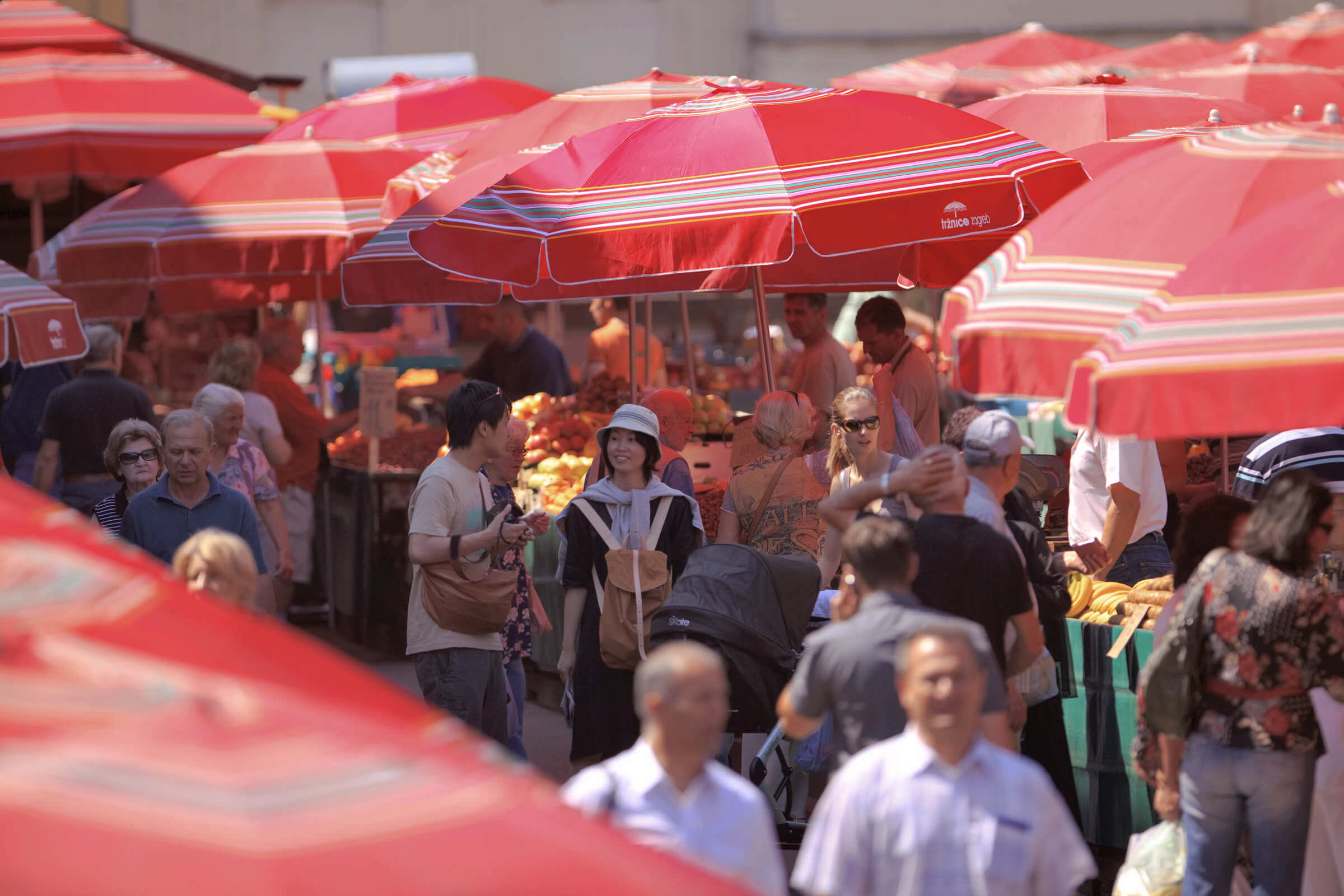
Photo: Romulic & Stojcic
Zagreb’s local economy attracts people from all over the world with its renowned traders, known as 'kumice' – who fill the atmospheric scene with delicacies and comforting commotion of distinct voices – as well as flower stands offering seasonal greenery before the entrance to the active market.
The Dolac Market, having been built between Kaptol and Tkalčićeva, has become Zagreb’s busy thoroughfare, which continues to showcase trading traditions that have been started all the way back in the 1930s.
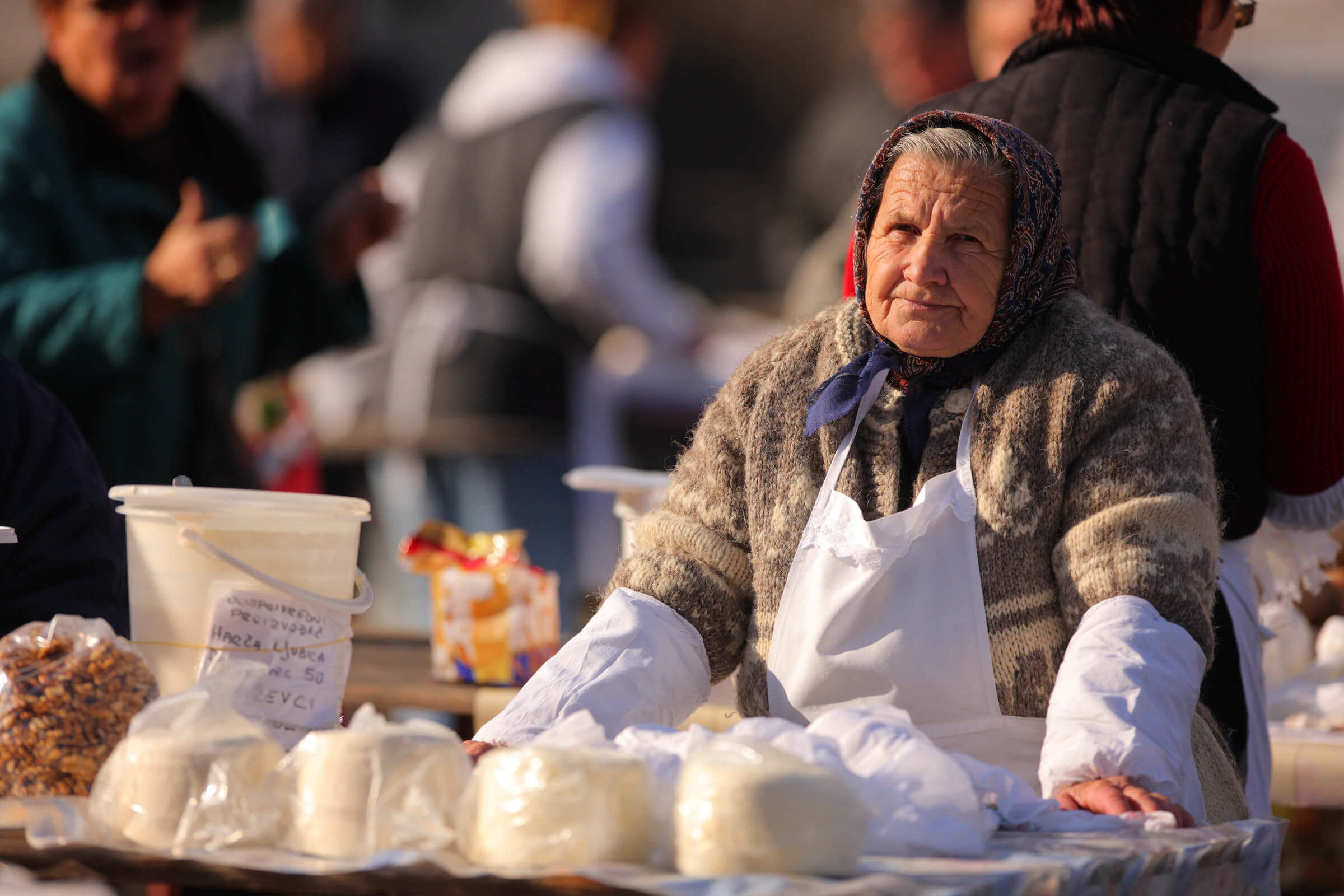
Photo: Romulic & Stojcic
Continuing on with the famous Štrukli, the traditional specialty of the Croatian Zagorje region. The prized dish has earned its love amongst tourists and locals because it is handmade and quality, and earned its place within the local tradition. Being known as a pastry that is served as an appetiser, filling addition to soups, a tasty main meal, a fast snack or a sweet dessert, Štrukli has gained attention unlike anything else!
Moreover, in honour of the traditional dish, there has been the occurrence of Štruklijada, a special event organised in the village of Kumrovec since 2009. The event's purpose is to help promote and preserve the traditional method of preparing the štrukli pastry, which year after year is attracting ever more local and foreign guests.
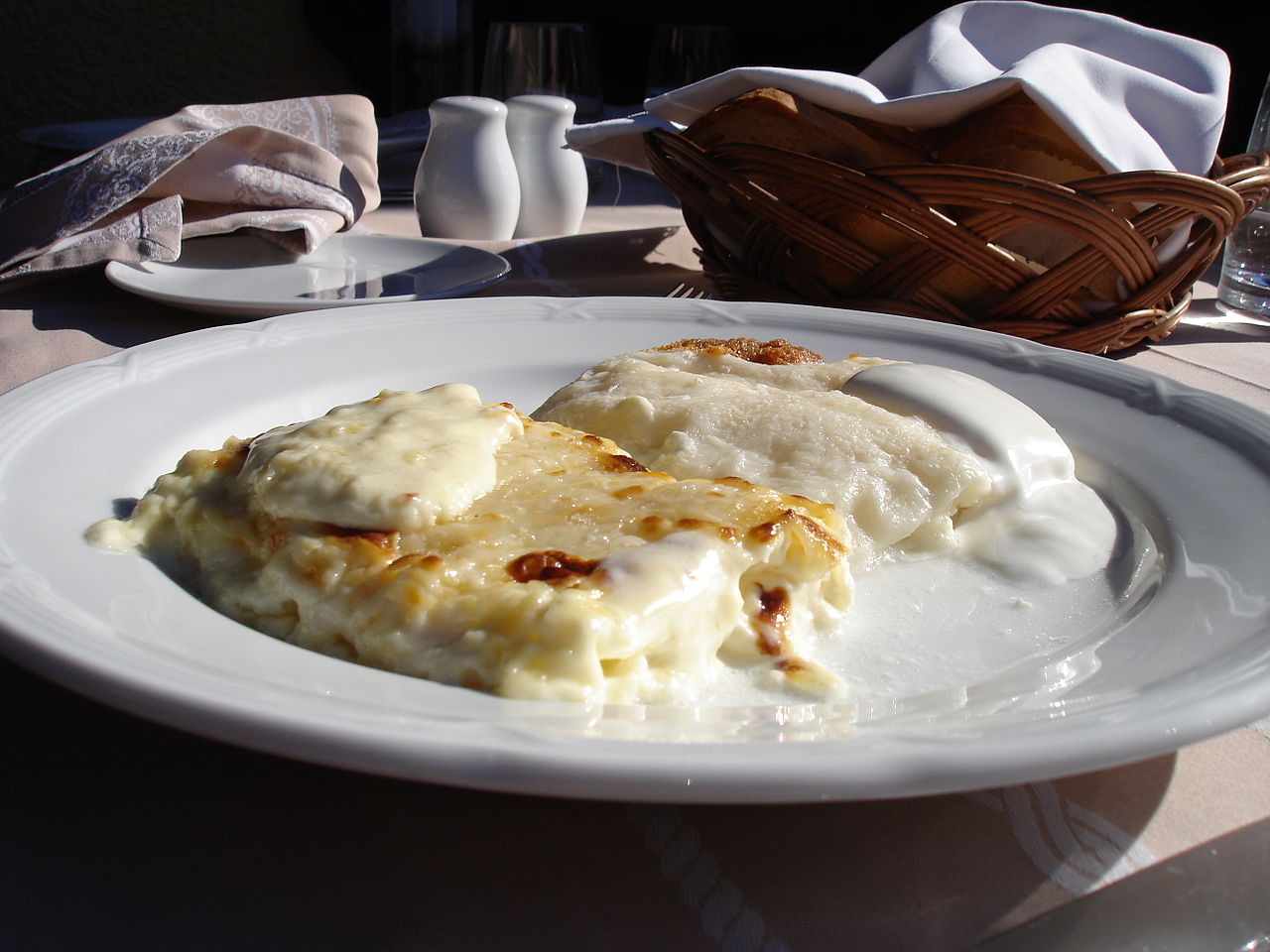
Photo: Bonč/Wikimedia Commons
To reveal, when first invited to try štrukli, I was impressed by the gentle taste of the soft dough, creamy cheese, eggs, and its sour-cream sauce. The dish made a great first impression on me and made me re-visit “La Štruk” – a small restaurant serving only štrukli.
Lastly, let’s talk about the sidewalk cafes, restaurants, and bars on Ivana Tkalčića Street. Unlike the street we now know and love, Ivana Tkalčića used to be a natural border – known as the Medveščak stream – between the two settlements that Zagreb emerged from, where numerous conflicts used to arise. It used to involve brutality and hatred, while now it promotes an atmosphere of blissful days filled with laughter and relaxation. And being known as the most vibrant street in Zagreb, the local street food does have a lot to offer!
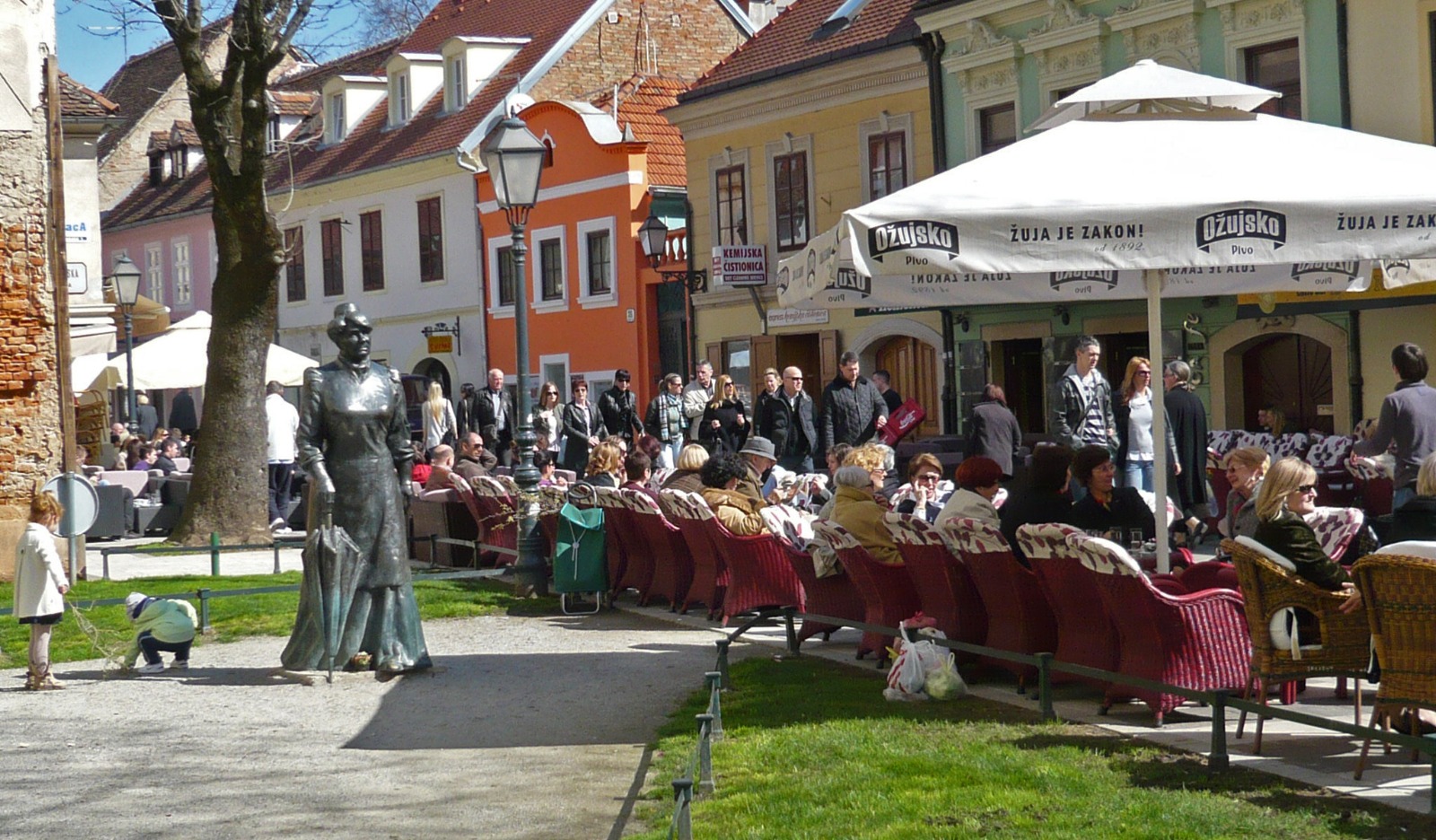
Photo: Luis Bartolomé Marcos/Wikimedia Commons
A mixture of cuisine and flavours can be found on this promenade; from oriental food to classical hamburgers, you will find everything here. But what makes this street and the dishes it has to offer extra special are the people. I find the indisputable charm of the street coming from the dynamics of the locals and the laid-back attitude of those surrounding you.
Do not miss out on the opportunity to discover the city’s distinct personality and the food it has to offer by finding out more about the culture it is exceptionally known for!
For more, check out our lifestyle section.
International Cuisine In Zagreb: Boršč, Pan-Slavic Food Specialists
September 15, 2020 - Continuing our series on Zagreb’s international food offer and the stories behind these cuisines and businesses. This time, Croatia's only pan-Slavic food specialists - Boršč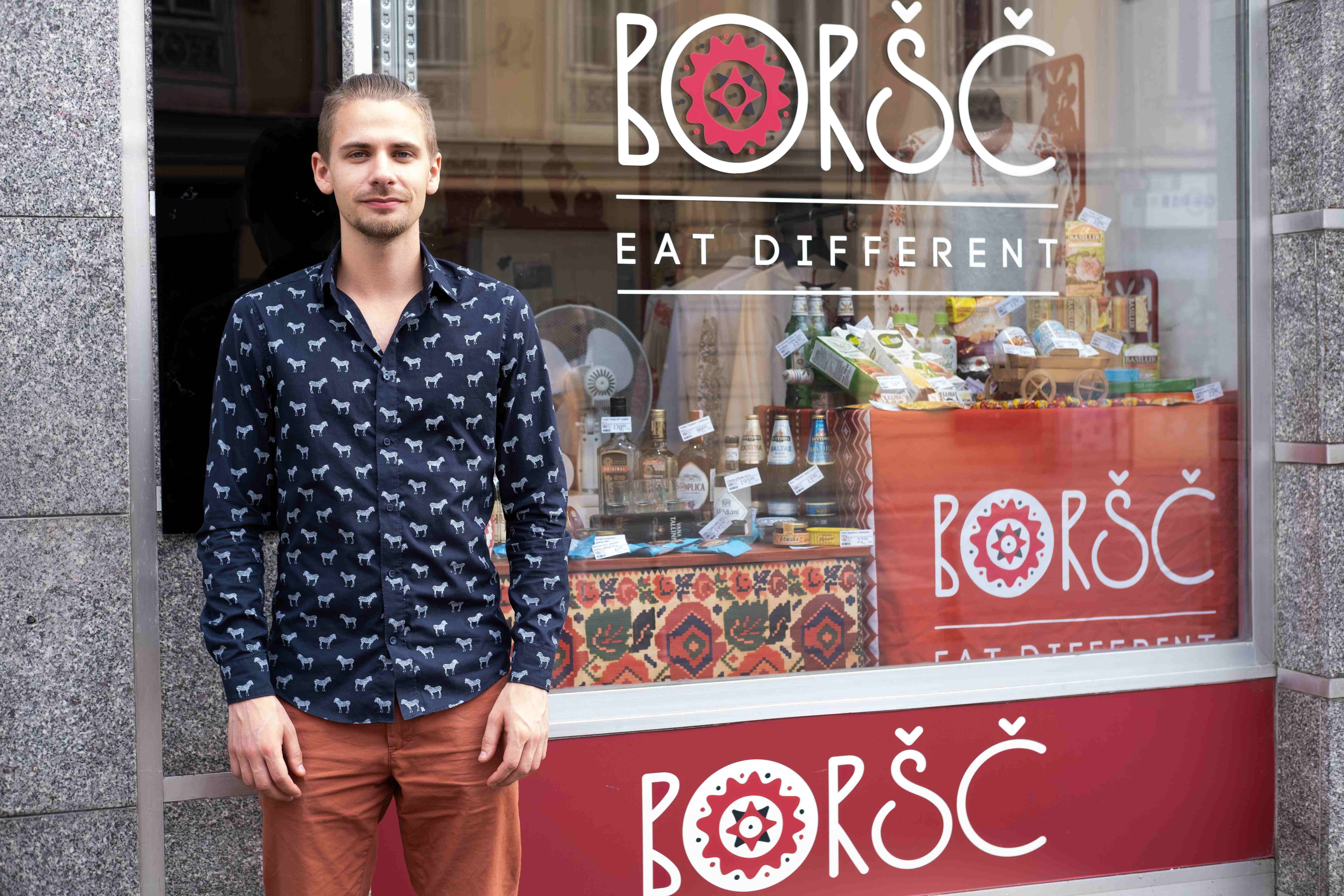
My name is Demian and I'm from Ukraine. My mother worked in Croatia, so I went to high school and to college here. She used to work in diplomacy. We moved around a lot. We went from Ukraine to Serbia, back to Ukraine, then to Croatia. Since coming here, aged around 15, I've been back to Ukraine only for visits – a month or two at maximum. Although I'm from western Ukraine, Lviv, a cultural town near the border with Poland, I also speak Russian and Croatian. And English. Apart from English, they're all Slavic languages, so you can find many words that have the same root. But, knowing both, I can say that the Russian and Croatian languages are really different from each other. Ukrainian is quite similar to Russian, although not as similar as some of the Balkan languages are to each other.
We opened Boršč four years ago. It started as a family business, me and my mum. We wanted to stock all the things we missed. Food and drinks from Ukraine, Poland, Russia, Estonia and Lithuania.
Ukrainian food is really not so sophisticated. Some dishes can take many hours to prepare and cook, but ingredients-wise, it's really not complicated. For instance, we have varenyky – the nearest thing you'd know them as is pierogi from Poland. They are traditional dumplings. You can fill them with anything you want. Cabbage. Potatoes, mushrooms. Potatoes and mushrooms. There are sweet versions with cherries or berries like strawberry. The savoury ones we usually fry in a pig fat which has some meat on it. It's a bit like Croatian čvarci, but softer and with more meat attached.
We have boršč. The recipe is a bit different to the Russian ones. Several countries lay claim to the soup. But, many do say that it is originally Ukrainian. Its name comes from a green plant which grows there, in wet areas, borschevik. The original boršč was green, not purple from beets. We still make the green one now, sometimes with different ingredients, and more often in summer. Sometimes it's completely vegetarian, other times it has meat and some people cook it using only vegetables and beef or pork bones.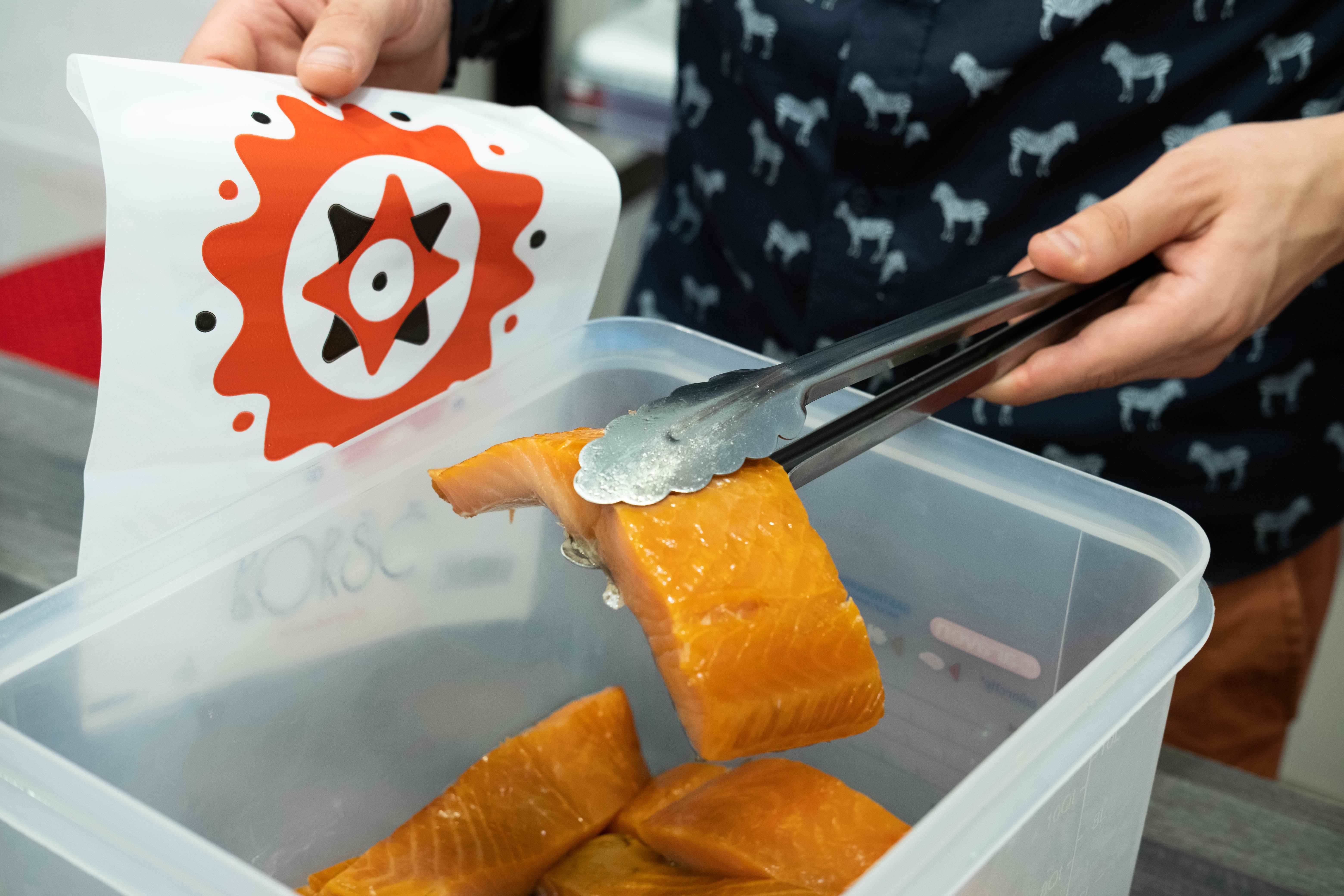
I've never come across a country more reliant on pig meat than Ukraine. If you think that Croatians eat a lot of pig, you should go to Ukraine! You have much more beef, veal and lamb in the Croatian diet. Those dishes you don't have regularly in the Ukrainian diet. We do eat chicken and, yes, there are some beef dishes. The fish we eat is completely different to that eaten in Croatian – ours comes from the Black sea, the Baltic or the North sea. The most popular is salmon. To be honest, I don't know the English names of the other fish, ha! I'm sure people in the UK have the same ones on their menu.
The climate in Ukraine can be tough. It's much colder there. Potatoes and cabbage grow well. In Croatia, you have beautiful tomatoes and green salad. You would not see that in Ukraine. But, our potatoes are the best. The land is very fertile, particularly in central Ukraine. It's good for growing.
In Boršč we sell several kinds of fish which are popular in Ukraine and Baltic countries – salmon, herring and trout. Our smoked salmon comes from the north sea. Almost everything in the shop comes from Europe, much of it from Norway, like the salmon, the red caviar, other fish. This salmon is actually smoked in the Netherlands. In Croatia, salmon is usually sliced thinly in the stores. They don't have the tradition like in northern countries to sell it in these styles of pieces. It's a really popular item in the store. We have caviar from the North sea, some from the Caspian sea. And we have salt cod – bakalar in Croatian - and cod liver, which is incredibly popular in Ukraine. It's considered a delicacy and is something of a national dish, often served on toast.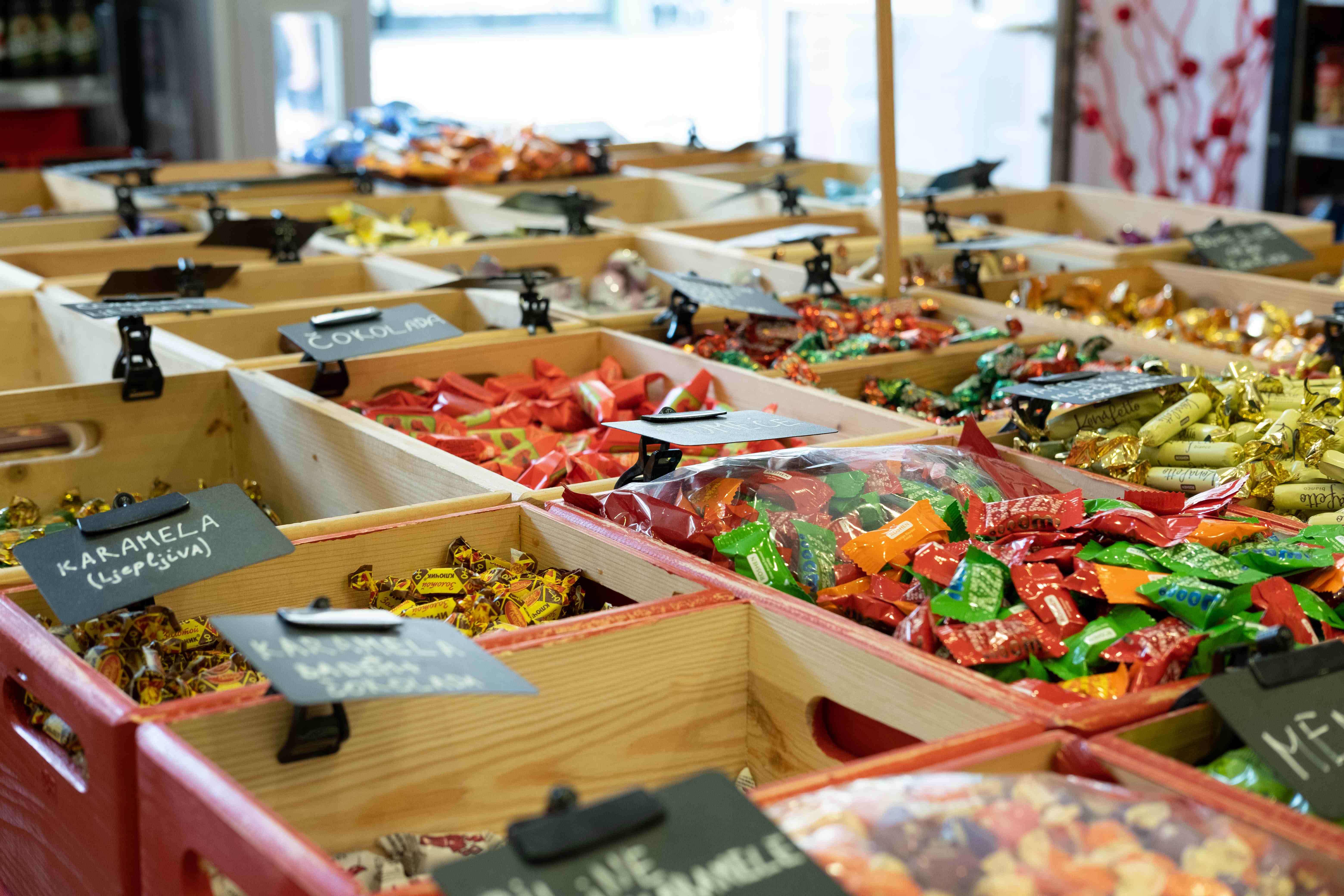 Chocolates from Russia, Ukraine and Poland were one of the biggest revelations TCN tried at Boršč - they were incredible! They have a higher content of (expensive) cocoa and less (cheap) sugar than most of the chocolates made in Croatia
Chocolates from Russia, Ukraine and Poland were one of the biggest revelations TCN tried at Boršč - they were incredible! They have a higher content of (expensive) cocoa and less (cheap) sugar than most of the chocolates made in Croatia
Sweets are really good in Ukraine and Russia. They're very different to sweets in western Europe. And different to those in Croatia too. Something like Lindt is much more sweet and buttery. Ukrainian and Russian sweets have a higher percentage of cocoa. Some of our Croatian customers are chocolate connoisseurs and these are very popular with them. Another popular purchase made by Croatians is halva – it's usual to only find the Turkish ones here. They are quite tough, made from sesame. Ours are softer, made from sunflower.
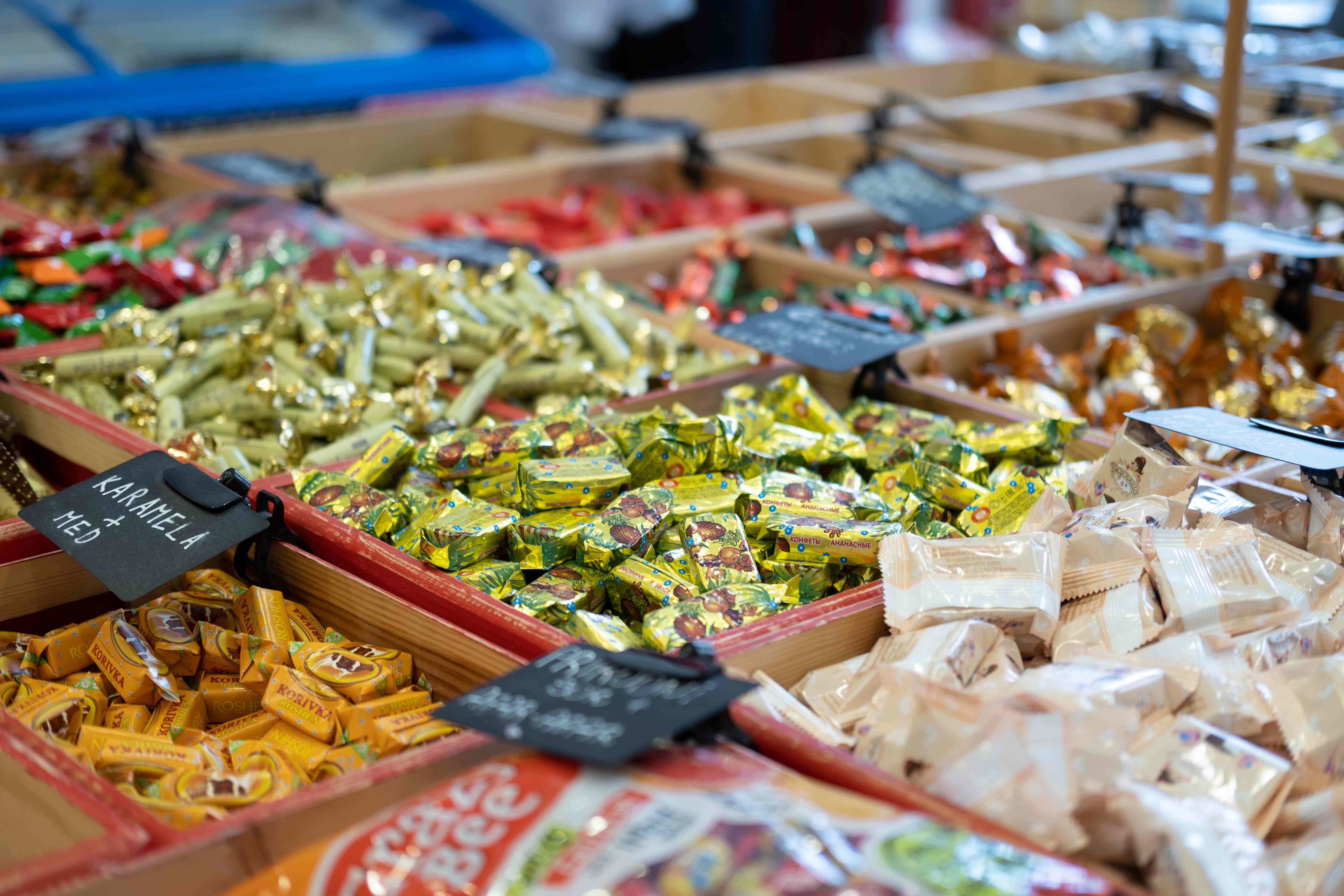 The colourful display of pan-Slavic specialist chocolates dominates the centre of the shop - you so want to try them all!
The colourful display of pan-Slavic specialist chocolates dominates the centre of the shop - you so want to try them all!
We have dark beers and light beers. They're from Lithuania, Russia and Poland. We have wines from Moldova and Georgia. We have sparkling wines from Russia and Ukraine. The Georgian wine is the best we have. Georgia claims to be the oldest winemaking country in the world. Winemaking is proven to be at least 8000 years old there. They have the oldest indigenous grape in the world. Georgians bury their wine underground in Kvevri - huge clay jars, which add an extra flavour. After the wine is fermented like this, it doesn't require the addition of preservatives when being bottled.
We have many preserved vegetables, like yellow tomatoes, seasonings and different types of sunflower seed, condiments that might be comparable to ajvar. This one is from Georgia and is a spicy mix of vegetables, using garlic, paprika and horseradish. One of our best-selling items is actually condensed milk. It's used not only in the Slavic kitchen but in the cuisine of Asia and South America.
This is kvass. It's a fermented drink, but it's non-alcoholic. It's popular in all north European countries, the whole Baltic region and especially popular in Russia. The taste is very specific. It's somewhere between Coca cola and beer. The ones we sell come from Russia and Ukraine. We also have a couple of types of birch juice. It's a traditional non-alcoholic drink made from the sap of the birch tree. It's maybe a little comparable to Croatia bazga, but much, much less sweet. It's very healthy. The sugars in it are natural ones. It has an incredibly refreshing taste and maybe a very soft lemon aroma (TCN tried this – it was amazing!)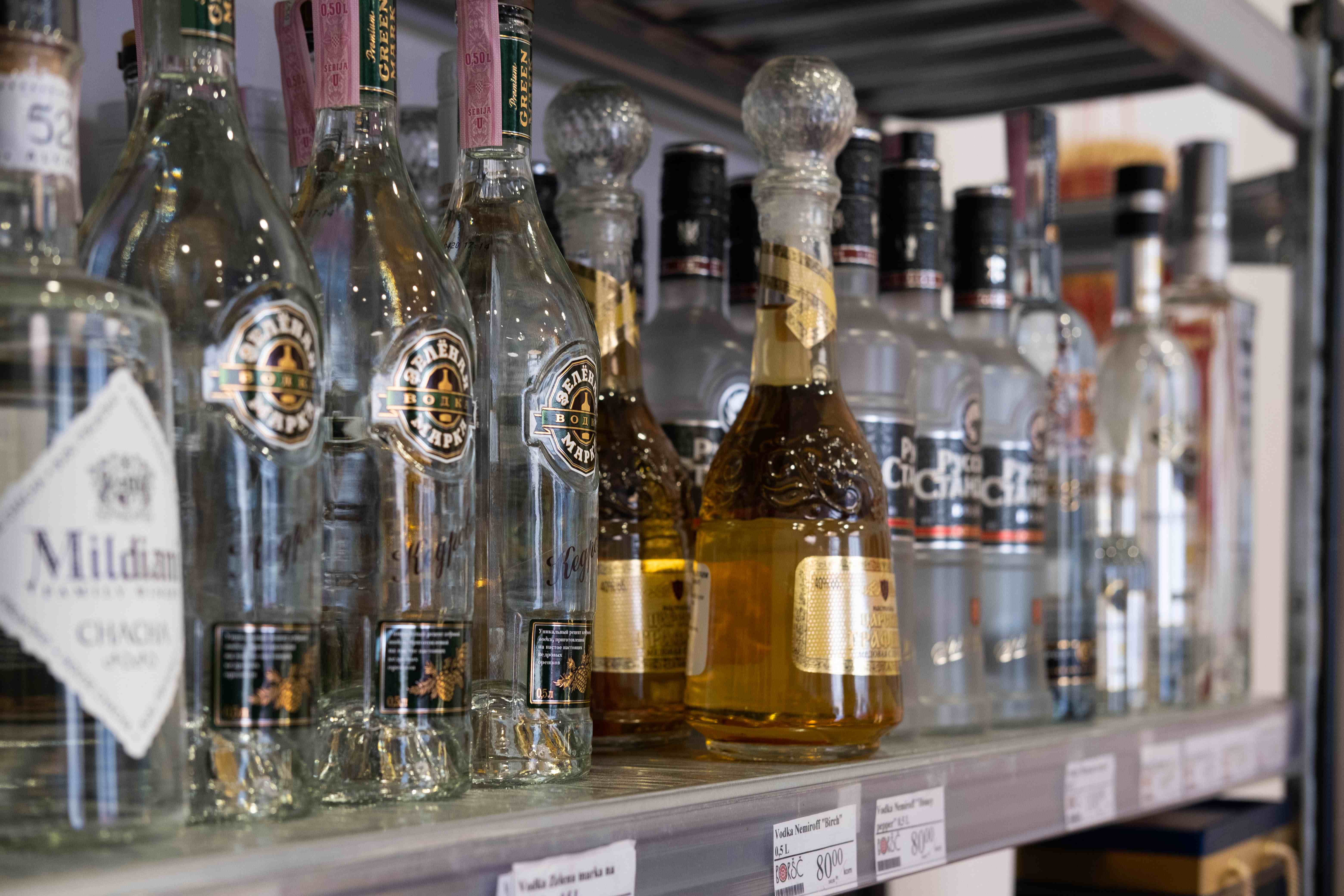
Some of the most prestigious items we sell are the varieties of hard alcohol. We have Armenian brandies. This one, Ararat, is considered to be the best one in the world. We have several vodkas, including Beluga, which is a premium vodka from Russia. We have a Ukrainian vodka and we have a honey and pepper flavoured one too. You can easily tell the quality of a vodka from the aroma and the aftertastes.
Most of our customers are actually Croatian - around 60%. Russians and Ukrainians are the next highest percentage. We have some Polish and Lithuanian people come in, but it's usually young people who are here to study with Erasmus.
I've been living in Croatia for about 11 years now. I enjoy life here. Everything is simple, easy, relaxed. It's considered one of the safest countries to live. And you can really feel that. It feels safer than the other two countries where I've lived. I'm maybe too young to yet know if I will stay here forever, but I can definitely say that I enjoy Croatia.
You can visit Boršč at Vlaška 58 (ulaz s trga Drage Iblera)
To follow our whole series on international cuisine and to follow the Croatian restaurant and gastro scene, keep an eye on our Gourmet pages
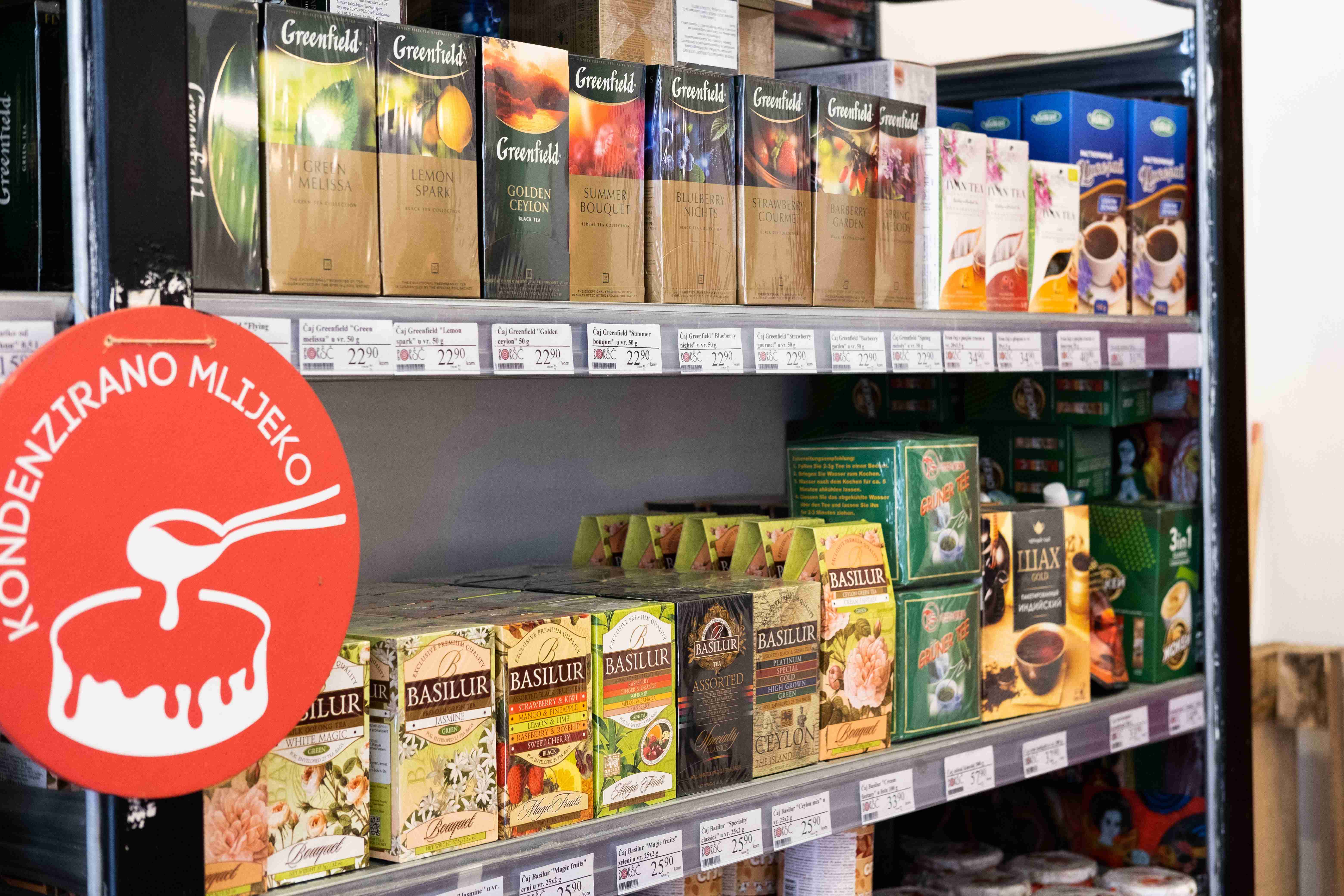
All photographs © Mateo Henec
For the latest travel info, bookmark our main travel info article, which is updated daily.
Read the Croatian Travel Update in your language - now available in 24 languages
International Cuisine In Zagreb: Khaos Thai
August 6, 2020 - Continuing our series on Zagreb’s international food offer and the stories behind these cuisines and businesses. This time, the spicy but light takeaway lunches of Khaos Thai.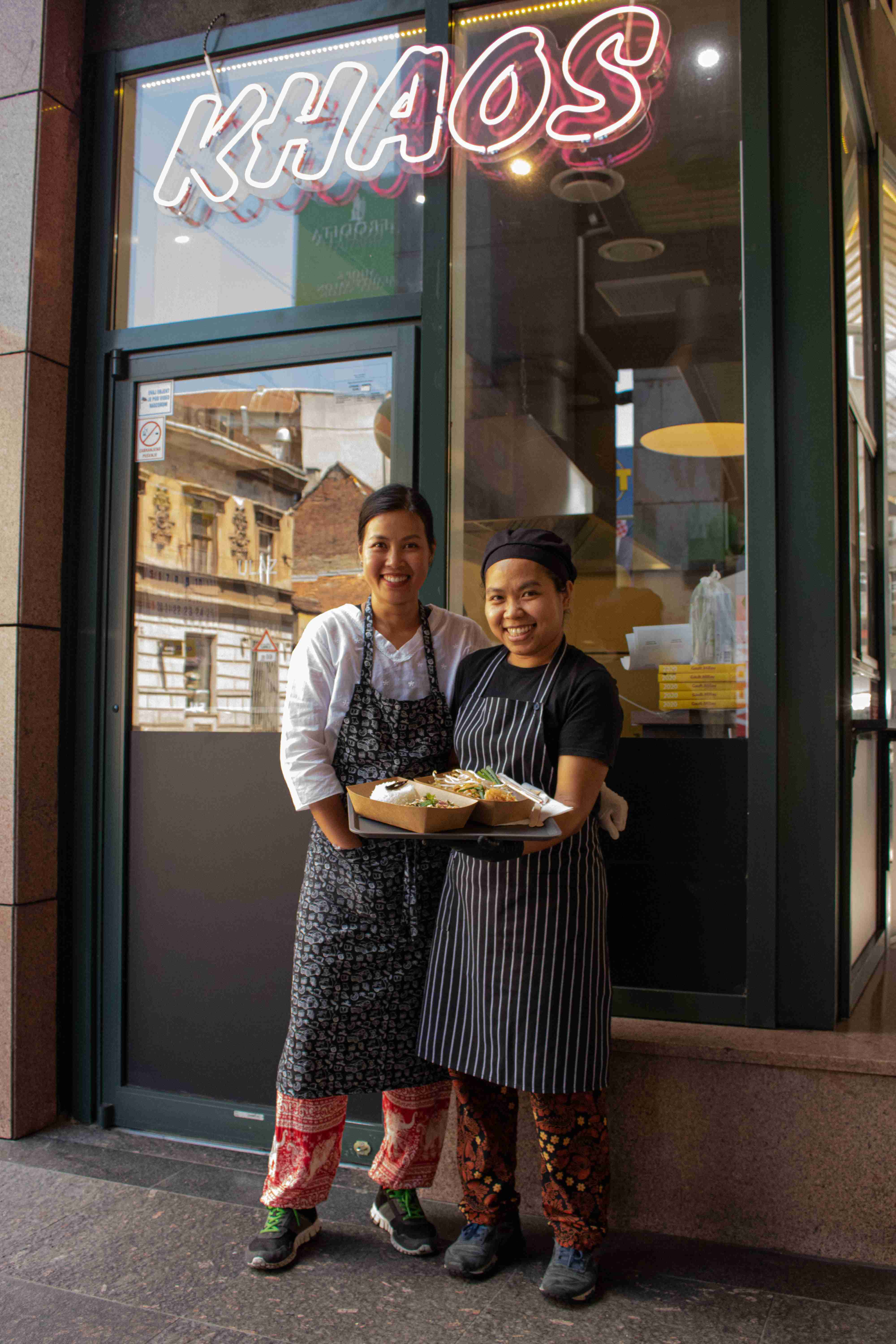
Rinrampai Lateja and Saralee Madnui standing outside the Khaos Thai kiosk, next to Importanne Gallery on Vlaška ulica © Mateo Henec
Saralee Madnui: We’re both from Thailand. I’m from the south of Thailand, close to the border with Malaysia.
Rinrampai Lateja: I’m from Bangkok, the capital city. It’s in the centre.
Saralee: I’ve been here for five years, her for ten. We’re both here for the same reason; we’re married to Croatians. I met my husband when he was visiting Thailand. She met her’s while she was working on a cruise ship.
Saralee: Every region of Thailand has a different taste. In the north, the food is a little bit soft, but still spicy from curry paste. In the northeast, their flavours are really strong, spicy and sour, but they use much less fat. The land in that region is not so rich and the food is fast and simple, cooked quickly on the grill or in a pan. In the south, where I’m from, we have all the food; coconut, fish from the sea. The climate is good and anything can grow there. It’s a very rich cuisine. In central Thailand, the taste is more smooth, but flavoursome from strong seasoning.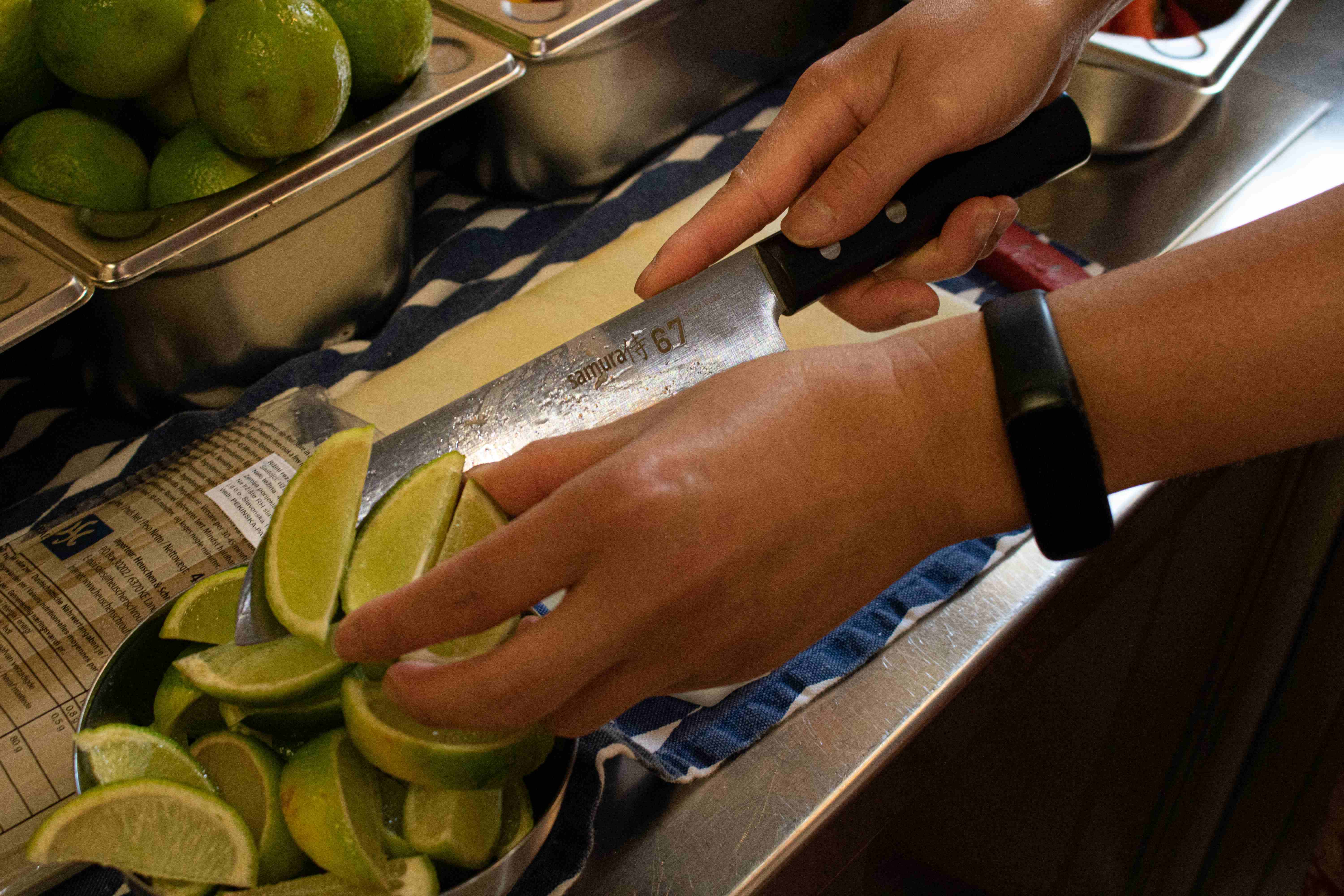
Khaos Thai © Mateo Henec
Saralee: The food at Khaos Thai is more like central Thai cuisine. We make some of the most well-known dishes from Thailand. Although, we also make Larb, which is from the northeast. It’s meat, fresh herbs, chilli, lime juice and rice. Salad is one of our most popular dishes here. Ours is salty, sour, crunchy and spicy, with dried shrimps, peanuts, green papaya, long beans, red tomato and chilli. It’s a very colourful dish. This is very typical of Thai cuisine; lots of different textures, flavours and colours. Like with Thai curry – the meat is cooked until it is soft, but we also add bamboo, for texture. The dish from this region that most reminds me of Thai food is goulash. It’s not the same, but it looks very similar to Massaman curry; red and with oil floating on the top. Goulash is spicy from paprika, whereas Massaman is spicy from herbs, a little more sour and it also has coconut.
Saralee: The first food that impressed me when I came to Croatia was cevapi. But, now I like more sarma. It has that sour taste that Thai people like, from the pickled cabbage. I also like it made with the green leaf (blitva). Interesting.
Saralee: When we are not working, we both very much like cycling. Cycling changed our lives.
Rinrampai: You cannot cycle in Bangkok. You would probably die. There’s so much traffic. And people just drive how they want. Never mind the rules. But, here it’s so easy to use a bicycle. You can get anywhere in Zagreb in 5 or 10 minutes on a bicycle. In Thailand, you must use a motorbike or a car.
Saralee: We love our bicycles here. We travel to work every day on bicycles. When we’re not at work we’re always riding our bicycles. I ride with my husband. I’ve ridden to Velika Gorica, Rakitje, Samobor and all over Zagreb.
TCN: You went all the way to Samobor on a bicycle?
Saralee: Yes. With my poor husband. But, he knows the tricks. He said “OK, we go Samobor for kremnšita. Then I will have power for the journey.” Ha! He was the same when we went to Velika Gorica. When we arrived, he said, “Ooh, do you remember that restaurant that is here..?"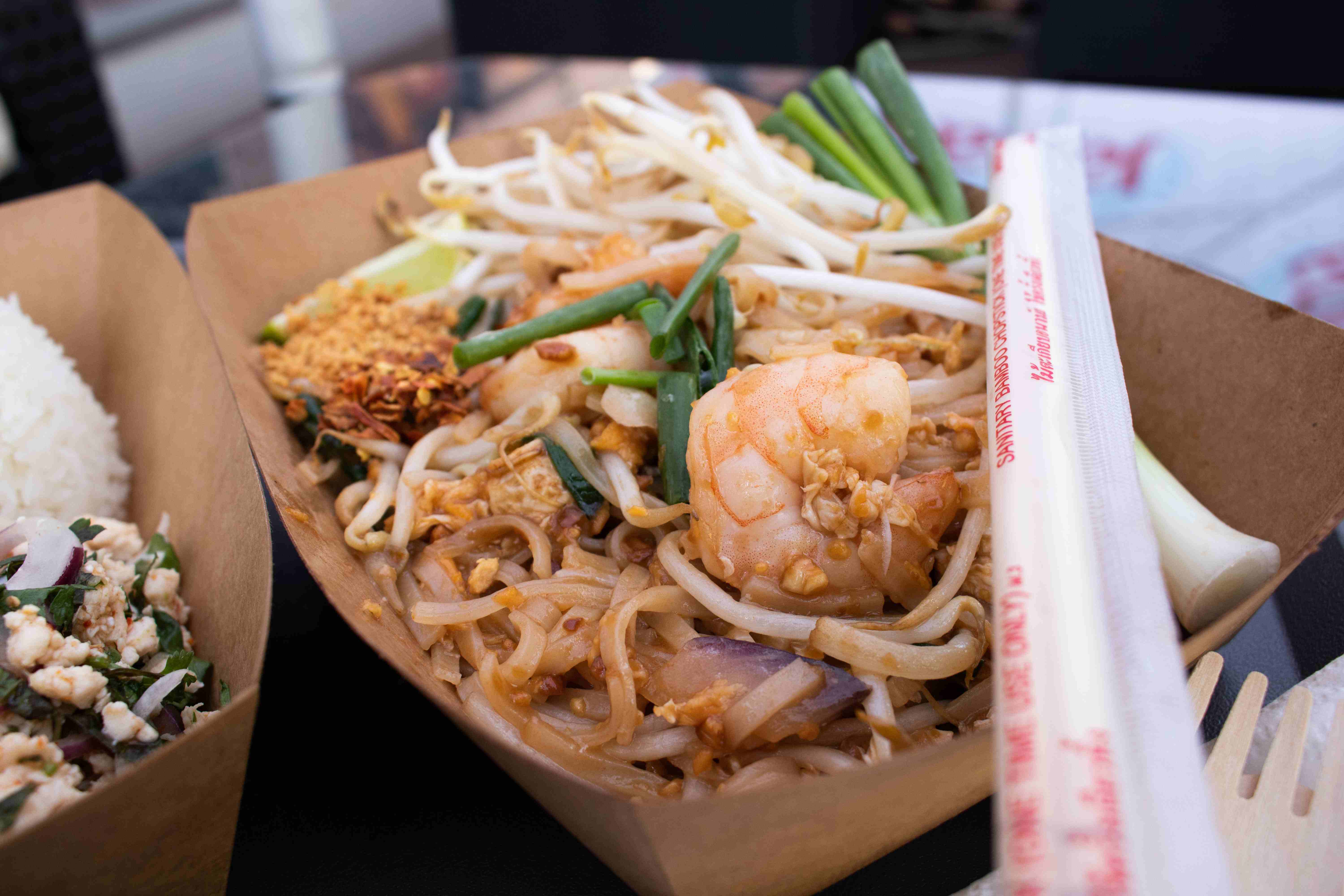
Pad Thai, one of Thailand's most famous dishes © Mateo Henec
Saralee: The dish people come back the most for here is Pad Thai. When we first opened, I thought maybe this might be too sweet for them. But, they really like it. They like the Thai Green Curry too. Some of our customers have been to Bangkok or other places in Thailand and they like to come here because our food reminds them of their visit. People tend to get the curry if they think Pad Thai is too soft for them in spiciness, or too light.
In the first week we worked, we opened at 12 midday until 8pm. There were queues around the corner. We couldn’t finish before 9pm. It was too much. There’s only the two of us. Nobody else can make this food. So, we had to reduce the hours. Now, we only work in the afternoons; midday until 5pm. But, that works very well.
Thai food is perfect for lunch; it’s all in one dish, you can hold it in your hands, it’s quite light food. The chilli and spice wakes you up and the lime and the herbs refresh you, so you are ready for the afternoon at work. It’s particularly good food for the summer.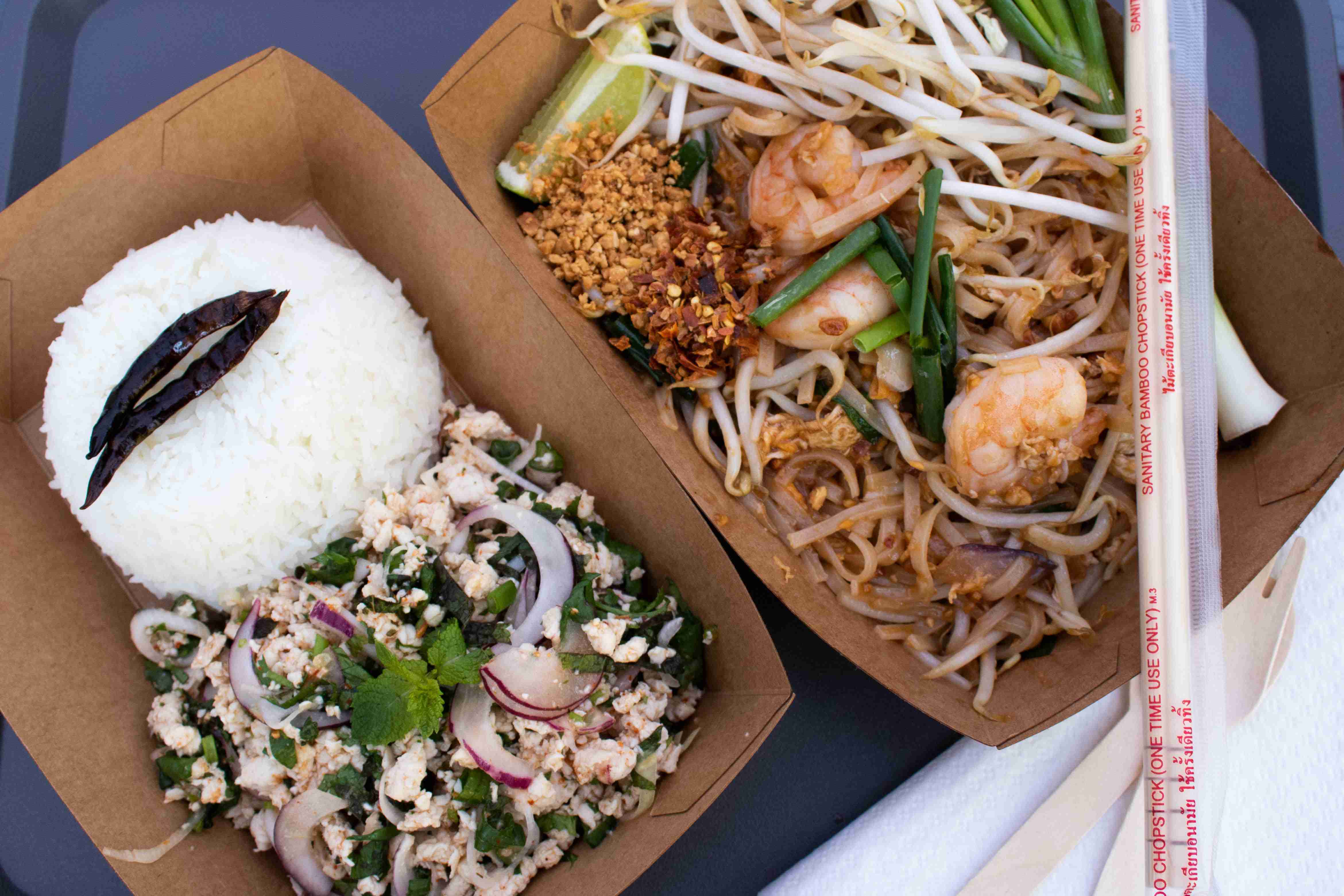
Larb, a salad full of flavour from northeast Thailand and Pad Thai © Mateo Henec
Rinrampai: Life in Croatia is much easier than it is in Thailand. Less people, less traffic, it’s smaller, you can go anywhere. In Bangkok, if you have an appointment at 1pm, you must leave your house at 11am, sometimes earlier. The whole city is a traffic jam all day.
Saralee: Thai people and Croatian people are very similar in being very helpful, particularly to strangers. Any questions I had when I arrived, people were always happy to answer. Croatians are also a lot more friendly than other Europeans, in my experience. They are very open people. This is like Thai people too. Although Croatians follow the rules better than Thai people. Thai people ignore them all.
You can visit the Khaos Thai kiosk outside Importanne Gallery, at Trg Drage Iblera 10, on the corner of Vlaška ulica.
You can read the introduction to our series on Zagreb international cuisine and the first installment here
To follow our whole series on international cuisine and to follow the Croatian restaurant and gastro scene, keep an eye on our Gourmet pages here
International Cuisine In Zagreb: La Turka
August 4, 2020- Continuing our series on Zagreb’s international food offer and the stories behind these cuisines and businesses. This time, the authentic Istanbul experience of La Turka.
My name is Tayfun Azakli. I lived in Istanbul all my life. My mother’s family is from the part of Turkey near the Greek border, but my father’s family all come from the other side, near the border with Jordan. The western side is very close to the Balkan region in terms of food and culture. They like meat and vegetable dishes. On the Black Sea side, near Jordan, the diet is much more based on fish. The climate is also very different. It’s sub-Tropical there. They have tea fields. My grandparents were tea farmers. My mother’s parents were also farmers, but in their more European climate, they grew wheat, sunflowers, like here. They also speak different languages. On the Black Sea side, the people are not ethnically Turkish. They are Laz.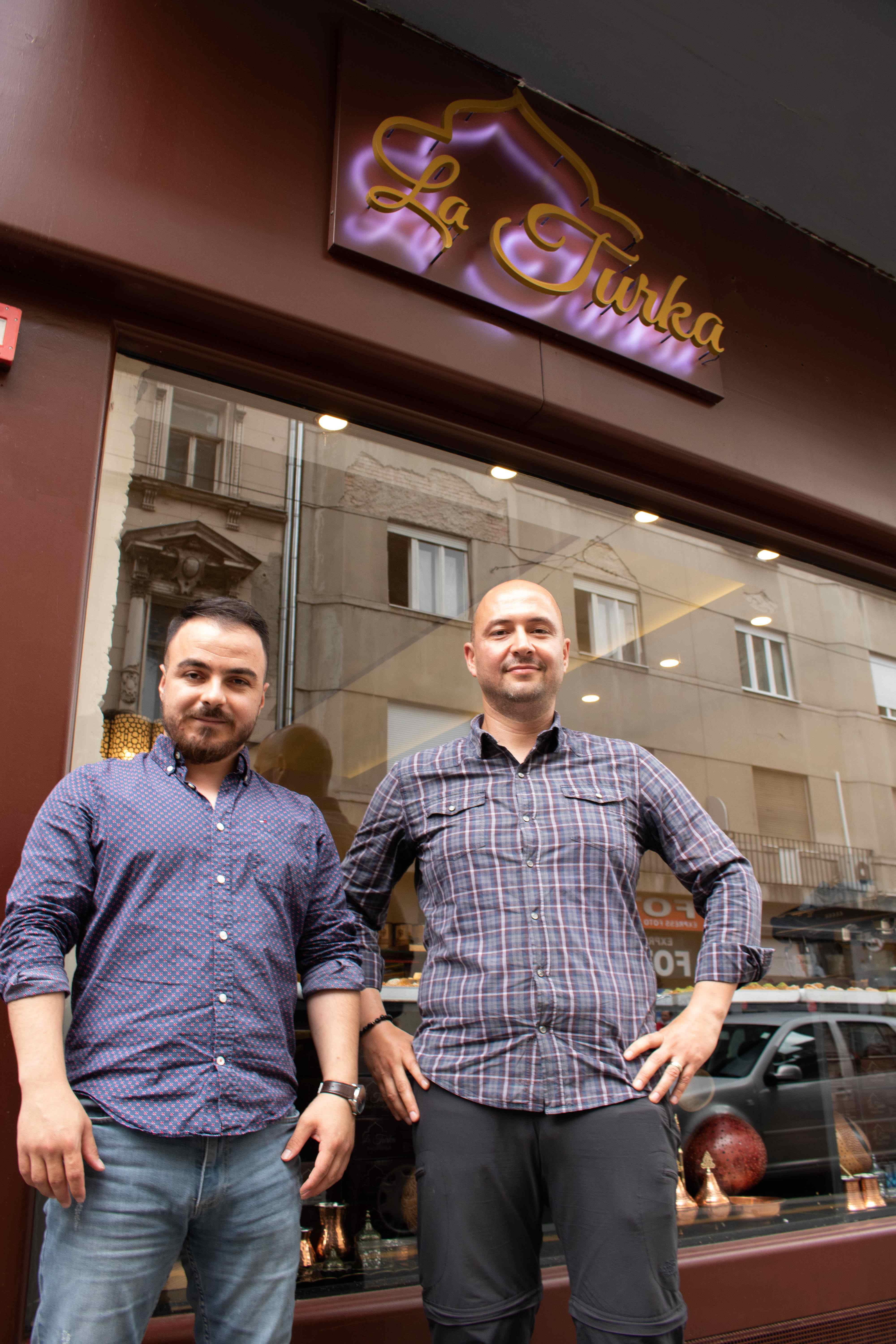
La Turka's retail manager Fares Hadad and co-founder Tayfun Azakli © Mateo Henec
I lived in Slovakia for two and a half years before coming here. I worked for Cisco Systems for 15 years – it’s one of the top 5 IT companies - and that’s where the job took me. My wife is Croatian and we decided to relocate here. We lived here for two and a half years initially, then we went to Dubai for six or seven years before coming back here two years ago.
I have two sons. I didn’t want them to grow up in Dubai. Dubai is very nice, but there’s a certain life standard. I think that if you get used to that lifestyle, you couldn’t be happy anywhere else. It’s very high end. Almost every house has a maid or nanny. Your income is three to four times what you would get in Europe. This is a huge contrast to my childhood. My mom was a teacher, my dad a civil servant. We had a limited income. Challenges to finish the month. I would work in the fields when I stayed with my grandparents. My kids were growing with a completely different perception of life in Dubai. I don’t expect them to have the same experience as me. Times have changed. But, I don’t want them to be handed everything on a plate.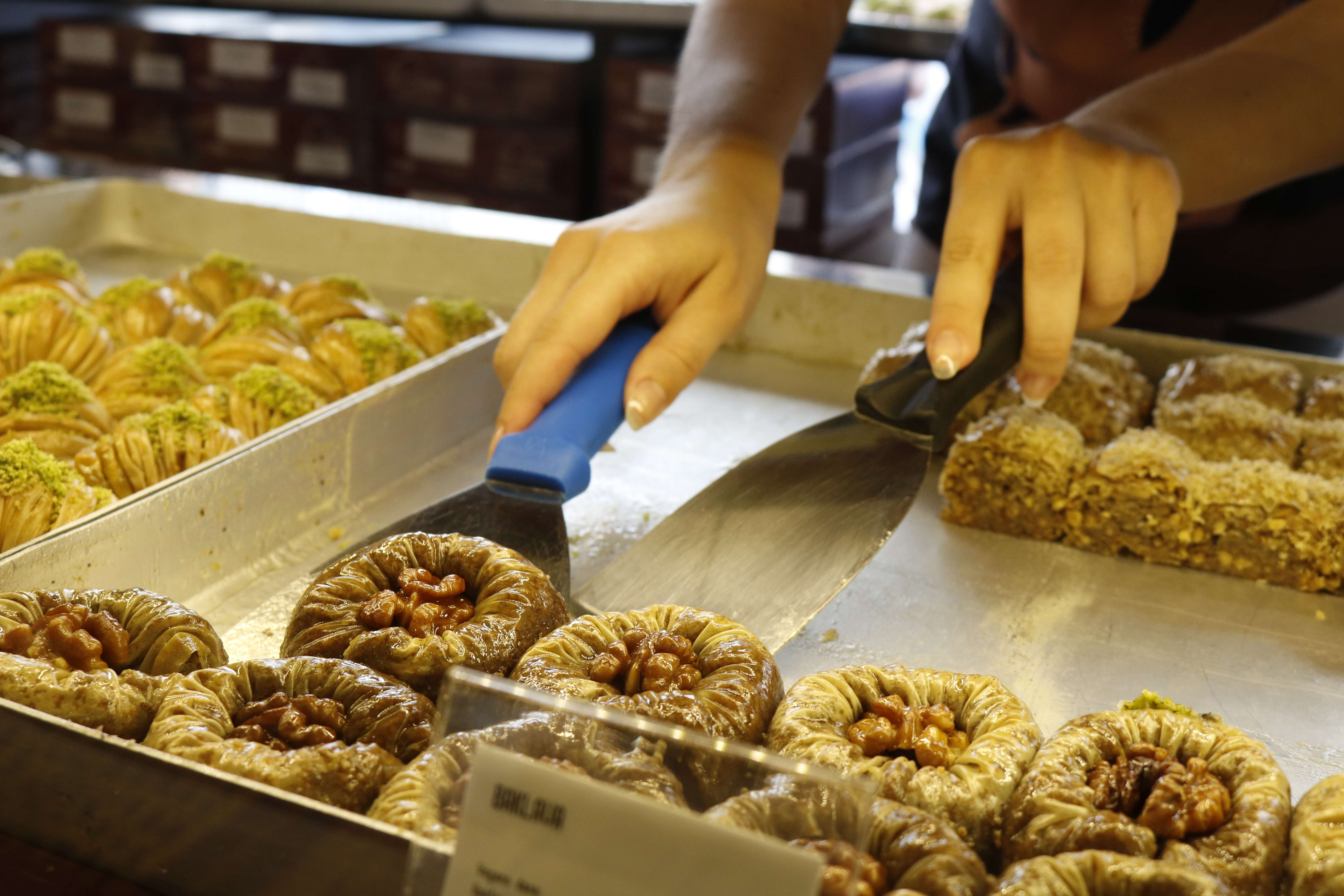
La Turka © Mateo Henec
Zagreb is a very safe and calm place to live. There is no rush in the day. The pace is quite slow. It can take some getting used to. People are nice. In any big city – be it Istanbul or London - people can be rushing and also quite rude. That doesn’t happen here. There are a lot of opportunities for businessmen here. It’s a good combination, a good place to invest. For me, at least.
In 2012 I met my business partner, Vedi Zarifgil, here in Croatia. He’s also Turkish and married to a Croatian. We started the company the next year. Originally, we were focussed only on wholesale and export. Only last year we decided to go into retail. We partnered with our friend, Fares Hadad, to open this store. It’s gone well. We plan to open two more in Zagreb during the next six months.
Ten years ago in Zagreb, there were only a few Chinese restaurants and a couple of bad Mexican places. Now, it’s very vibrant. The product that we sell is not foreign to people here, but they usually only know the Bosnian version. This is the Turkish version.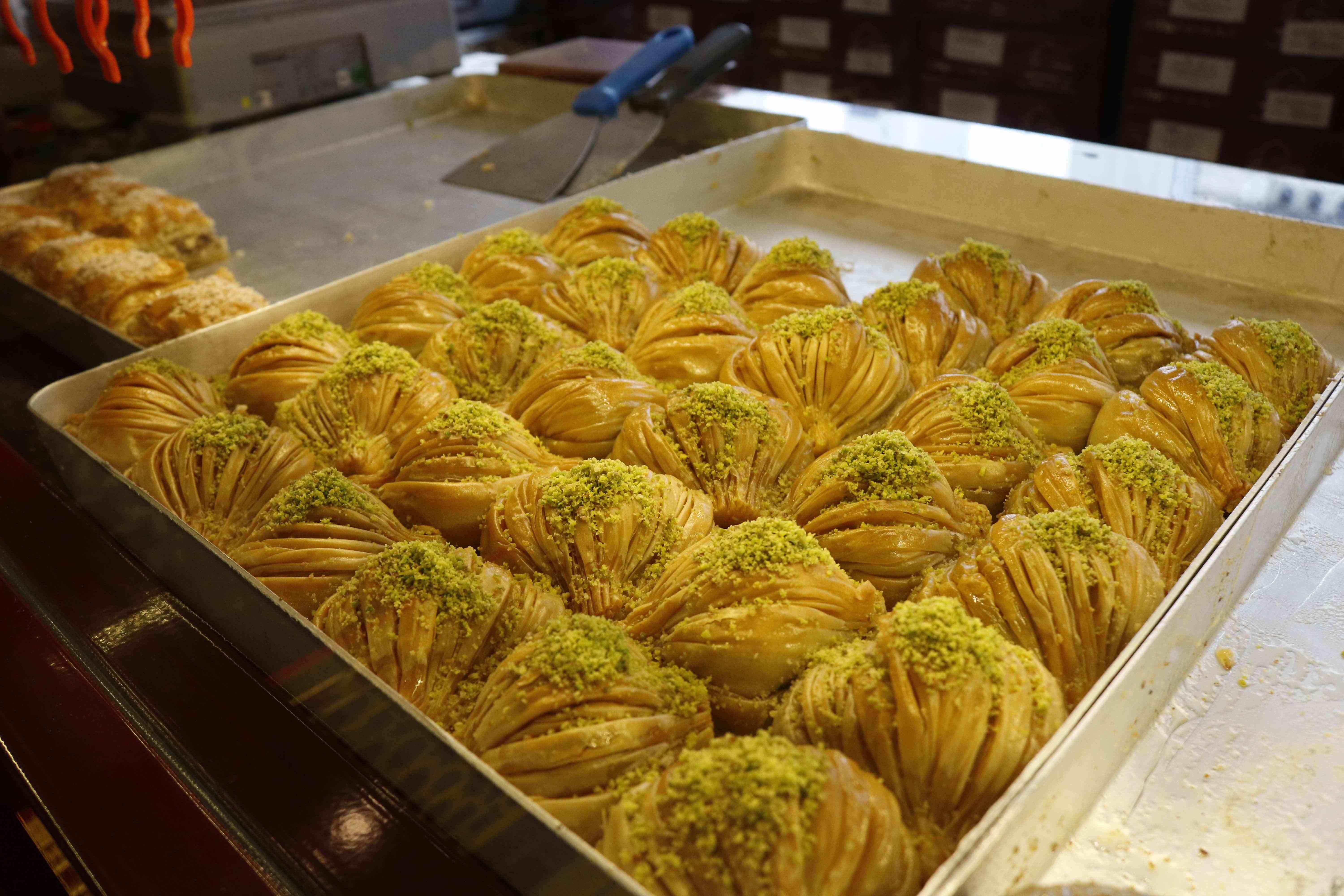
La Turka © Mateo Henec
We’re very careful about the quality of our product. For a niche product like this, I believe that you must present it at a very high quality. Then, it will sell. We didn’t expect to be so much of a hit, but we were successful from day one.
The main product we sell is baklava. The Bosnian version is made with walnuts. That’s what grows there. Ours has more finesse. In comparison, we make ours with extremely thin layers of pastry and the main nut we use is pistachio. In Bosnia, they tend to use a lot of syrup. Ours is drier. The syrup must not overpower the flavour of the pastry, the nuts, and the ghee (clarified butter). It’s a very fine balance. You should be able to taste each ingredient.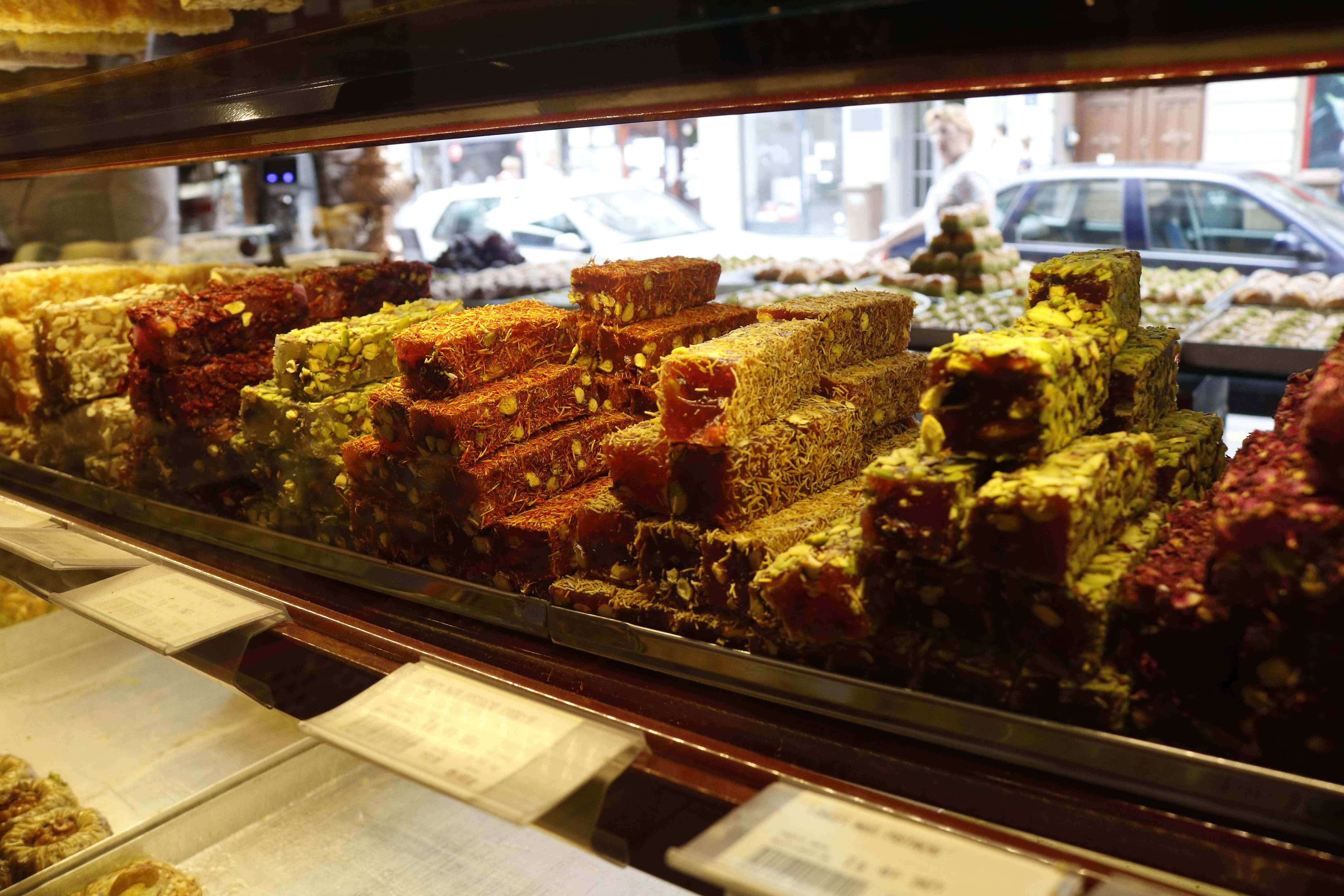
A selection of halva at La Turka © Mateo Henec
We import our pistachios from southern Turkey. Ghee is quite expensive; it’s rarely used in Bosnian baklava. Certainly not commercially. We have around 30 different variations of baklava on sale. We use almonds, pistachios, walnuts, cashew. For each of those varieties, we also have chocolate versions. For the classic baklava, the amount of nut is set, and it is ground. For alternative versions, we use whole pieces, sometimes with cream.
The presentation is key. It must look good. Classy. We want people to stop and look. We chose this street to open our business because everyone ends up here at some point. All visitors come to register at MUP. Our main client base walks here every day.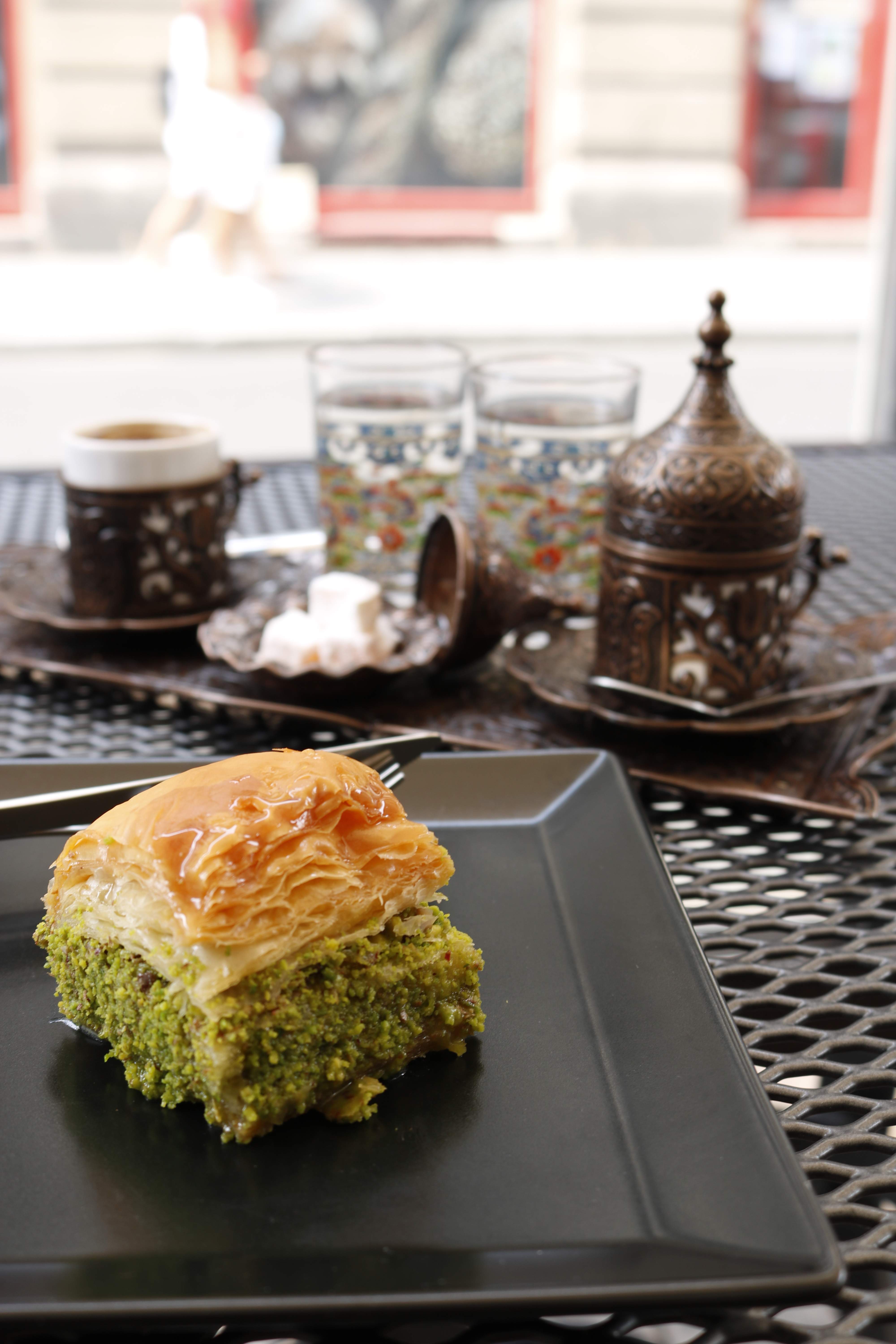
Baklava and Turkish coffee, served on the terrace at La Turka © Mateo Henec
We also have around 40 different kinds of Turkish Delight, halva (made from tahini, with different versions using cacao, chocolate). We sell the finest quality coffee available in Turkey. It’s quite unlike anything on sale here. We also have Turkish tea, which we present complimentary to anyone who comes to sit and try our food.
We want to offer an authentic taste of Istanbul. Everything from the interior design to the music we play helps us do this. We’re aiming to be a little like the Grand Bazaar. Except we don’t sell carpets, obviously. Ha!
You can visit La Turka at Petrinjska 47
You can read the introduction to our series on Zagreb international cuisine and the first installment here
To follow our whole series on international cuisine and to follow the Croatian restaurant and gastro scene, keep an eye on our Gourmet pages here
International Cuisine In Zagreb: Royal India
August 3, 2020- Continuing our series on Zagreb’s international food offer and the stories behind these cuisines and businesses. This time, from Punjab to Tkalčićeva; Royal India.
Royal India in the heart of Zagreb is the longest standing restaurant that sells Indian food. Like its chefs, owner Satinder comes from north India, the area’s distinct cuisine of spicy curries, oven-baked and marinated meats, and inviting breads synonymous with the Indian restaurant offer around the world.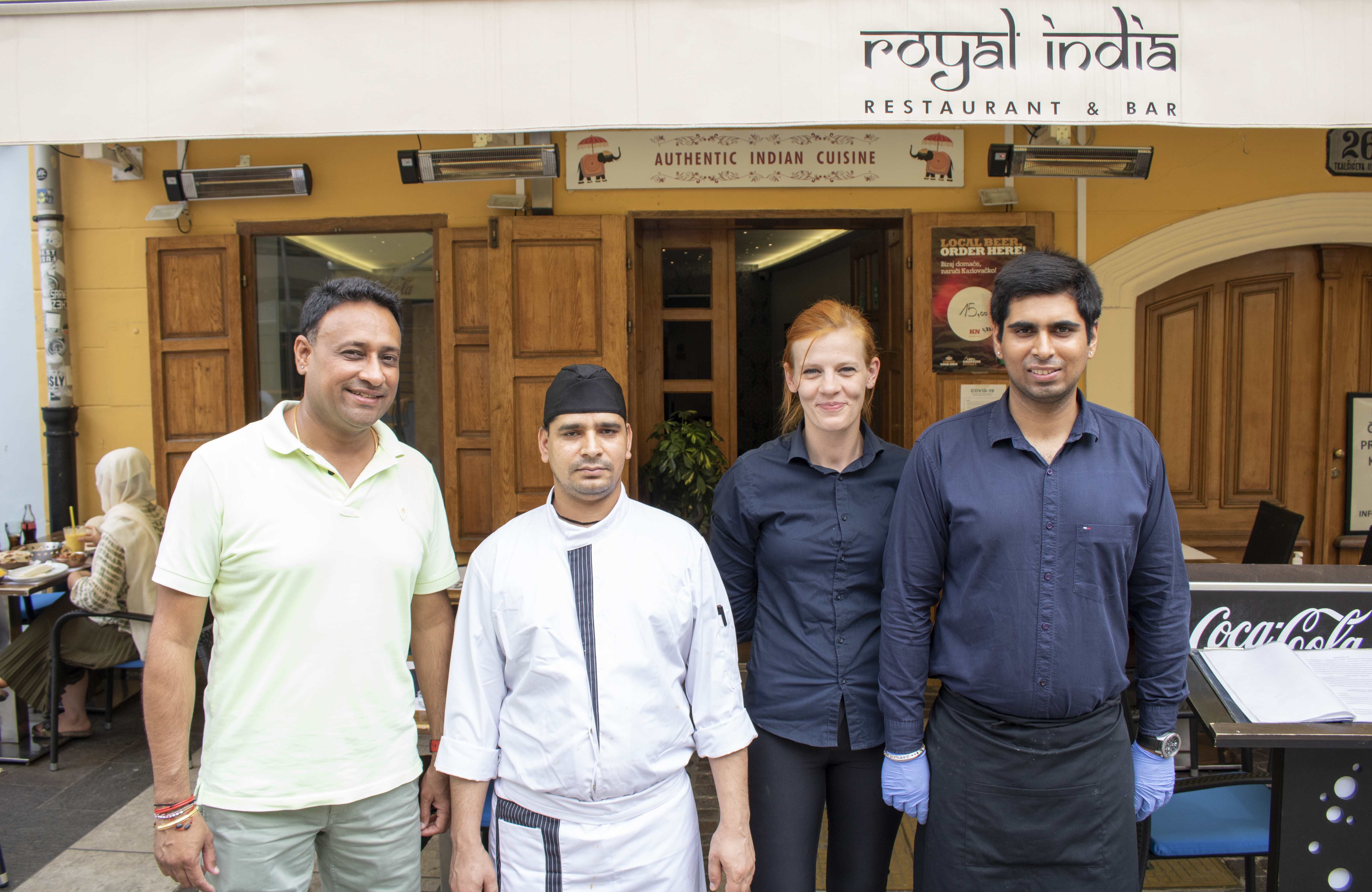
Satinder Pal Singh (far left) and some of the staff of Royal India © Vedran Pažin
My name is Satinder Pal Singh. I’m from the northern part of India, a city called Chandigarh. It’s the capital of Punjab and Haryana. It’s near New Delhi. I say near, it’s 250 kilometres away.
Here at Royal India we serve authentic Indian food. Mainly we concentrate on food from north India. The food from the north is totally different from food in the rest of India. In the south, the kitchen is totally different; dosas, fish. If you eat Indian food anywhere else in the world, 99% of the time you will be eating recipes from the north of India. It’s the most popular cuisine of India. We have a lot of different kinds of curries – chicken, lamb, and many vegetarian dishes - chicken tikka butter masala is the most popular one we make at Royal India. Northern India cuisine also comes with more bread than that in the south - naan breads made plain, with meat, with onion, with garlic, and chapatis. We always use Basmati rice. Only. That is very typical of Northern India. They use long grain rice in the south. Basmati rice has the best aroma, flavour, and texture (this is true – Kitchen Editor). We use Basmati rice because it grows in the north.
We use very different spices and flavours in Northern India cuisine. In the south, they use curry leaves, coconut, things like this. We use cardamom, cumin, fresh coriander and coriander seeds, star anise, black pepper, bay leaves, cinnamon, and a lot of spice mixes. We grind spices and mix them together in known amounts. The resulting mixture is called garam masala. We make our own specific garam masala here on the premises. We buy only whole spices. They are always the best. Whole spices stay fresh for longer and give a better aroma. The garam masala can vary from region to region. Across northern India, it is almost exactly the same. Within the restaurant setting, it depends on the chef.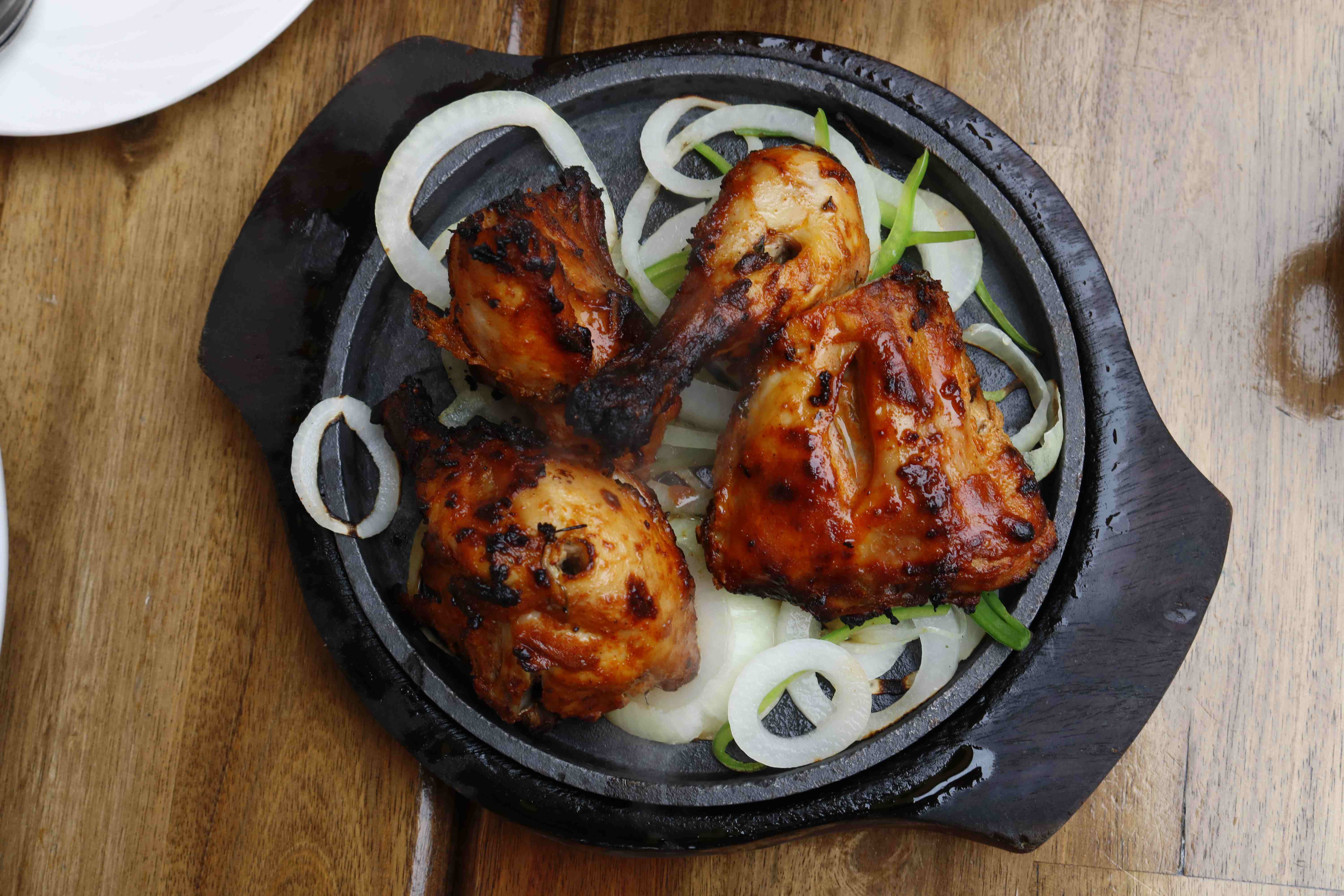
Marinated, grilled meats are a specialty of northern Indian cuisine © Vedran Pažin
The biggest distributors of spices are in Germany and in the Netherlands. You just can’t find what we need in Croatia. We get our spices from them and they import directly from India, Turkey and even some parts of Africa.
We’ve been open now for six years. Our most popular dishes are Murgh Tikka Butter Masala, which is made with chicken and Lamb Rogan Josh. When I first arrived here, I saw the market and it wasn’t good. There was only one restaurant in Zagreb making Indian food back then and I wasn’t impressed. When we opened Royal India, they closed.
Croatian people seem to really like our food. We make the dishes according to their tastes; they can choose mild, medium, spicy or something more authentic. We ask. Every curry we make individually, fresh to order. Because we’re on Tkalčićeva, we also usually get a lot of international visitors. They are normally already familiar with Indian cuisine. You can tell because they order different things and they usually already know what they want to order from the menu by the time the waiting staff come to the table. Croatian people who are less familiar with Indian cuisine sometimes need more guidance around the menu, explanations and, of course, we are very happy to do that.
All of our kitchen staff are from India. They are all from the north of India. At first, when I was holding interviews, most of them did not even know where Croatia was. I had to explain. In the past, it was very difficult to get working visas for such specialist chefs. Four years ago it was tough. They had a quota system and it was first come, first served. If you were not among the first to apply for that year’s quota, you had to wait for one whole year to apply again. The quota was 31 chefs for the whole of Croatia, irrespective of origin or specialty. But, now they changed the system and we no longer have any problem. It’s much more liberal now. The implications for businessmen, foreign investors in Croatia, are greatly improved because of this change alone. The change coincided with Croatia becoming a full member of the European Union. Quite a few young Croatians have left, to take advantage of job opportunities elsewhere in Europe. The deficit of manpower prompted the change. This is how the international jobs market is supposed to work.
Mango lassi (a sweet yogurt drink), curry, chapati, biryani (a rice dish) and marinated, grilled paneer cheese at Royal India © Vedran Pažin
I first came to this region because of business. I was importing textiles from Bosnia. I wanted to expand the business into Croatia, but we had difficulties. We could sell our product, no problem. The difficulty was getting people to pay their invoices. So, I decided to open a restaurant instead. Here, people pay immediately, so we don’t have that problem. I couldn’t have opened this kind of business in Bosnia because the economy is so much worse there. And the locals are much more hesitant to try foreign food. In Zagreb, the people are more openminded and more well-travelled. The import and export area I was in is now populated by a lot of Chinese and Turkish businesses. There’s a lot more competition than when I was doing it. I’m much happier doing this.
I live in the centre of Zagreb. One of the best things about living here is that it’s so safe. People are really very friendly. When I have time off from the business I enjoy sitting with friends. They are mostly Croatian. It was easy to make friends here. We usually go to coffee shops or each other's homes. I normally suggest a coffee shop on Tkalčićeva, just because it’s easy for me to get back to work if I’m needed.
We didn’t do home delivery during the restaurant lockdown. Our sales went down 80% over the year as a result. I have another restaurant in Dubrovnik, Incredible India; we didn’t even open yet this year. In the season, I usually travel constantly between Zagreb and Dubrovnik. Four or five times a month. We are currently moving the restaurant to a new site in the Old Town, so construction work is happening and I must travel to oversee that. We should be opening in the first few days of August, although I haven’t seen many tourists there this year. That’s a worry. The funds for the restaurant move are coming purely from my own pocket. I will wait until the end of the year, see the situation and maybe make some decision then.
You can visit Royal India at Tkalčićeva 26
You can read the introduction to our series on Zagreb international cuisine and the first installment here
To follow our whole series on international cuisine and to follow the Croatian restaurant and gastro scene, keep an eye on our Gourmet pages here
International Cuisine in Zagreb: Layali Lebanese Restaurant
July 22, 2020 - Offering Arabic food, Middle Eastern lunches like falafel and dips with salad, or spicy grilled meat wraps, Layali Lebanese holds an authentic provenance.
Once famous mostly as a run of beer bars and backpackers, over recent years Tkalčićeva in the capital's upper town has also become the focal point of international cuisine in Zagreb. But, even among the city's more exotic menu of meals, Layali Lebanese Restaurant stands alone. Offering Arabic food, their light, Middle Eastern lunches like falafel and dips with salad, or spicy grilled meat wraps hold an authentic provenance. Mastermind behind the menu is Zafer Hindash, who comes from the Middle East. He runs the restaurant with his nephew Bernard Solaković. Both practicing Muslims, alcohol is not permitted on their premises, so this is a destination that's all about the food
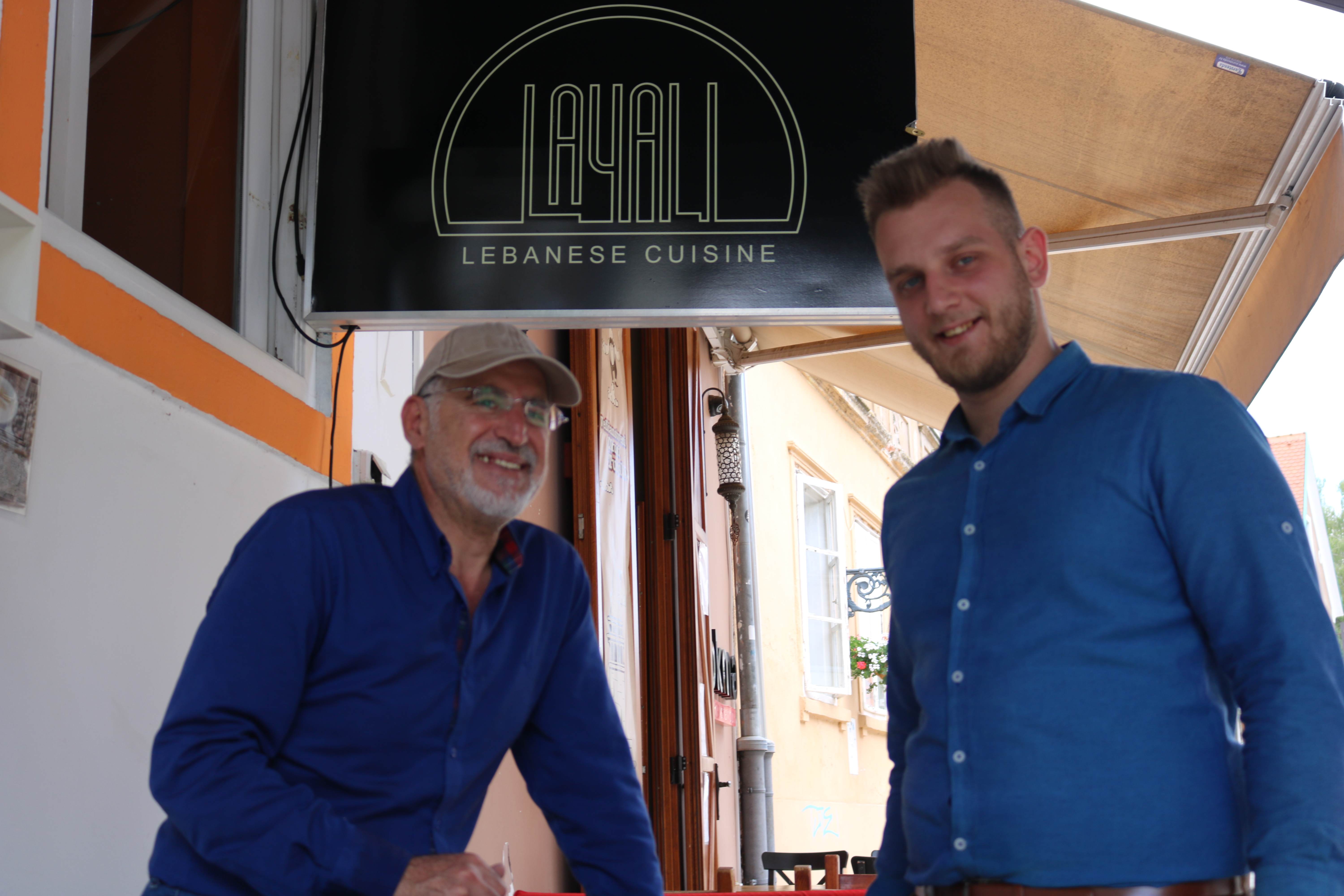 Zafer Hindash and his nephew Bernard Solaković © Total Croatia News
Zafer Hindash and his nephew Bernard Solaković © Total Croatia News
Zafer: My name is Zafer Hindash and I'm 53. I was born in Jordan but I left there in 1976. I lived almost all my life in Dubai. My brother got a job there, so we moved the whole family. The things I remember from Jordan are the people, the neighbours, the atmosphere. It was a very similar feeling in Dubai when we arrived. There were not so many rich people there back then, unlike today. You cannot imagine what it was like to be there to see all the changes. Really, it felt like everything was running too fast. You could walk down the street one day, come back the next and it would look totally different. A few years ago, I was searching for the next place I could be, for retirement. I went to Turkey, I visited here and I liked it. I left Dubai in 2017 and came to Zagreb.
Bernard: I didn't really know so well Arabic food until Zafer came here. I'd tried things my aunt would make on her visits here from Dubai. The food inside a Muslim home here in Zagreb is different from what you would find in a Catholic home. We brought many dishes here from Bosnia, which is where the older generations of my family are from, so it's very normal for us to make pita and burek at home. Some people might only buy this from pekara. We also make baklava at home and other sweet specialties.
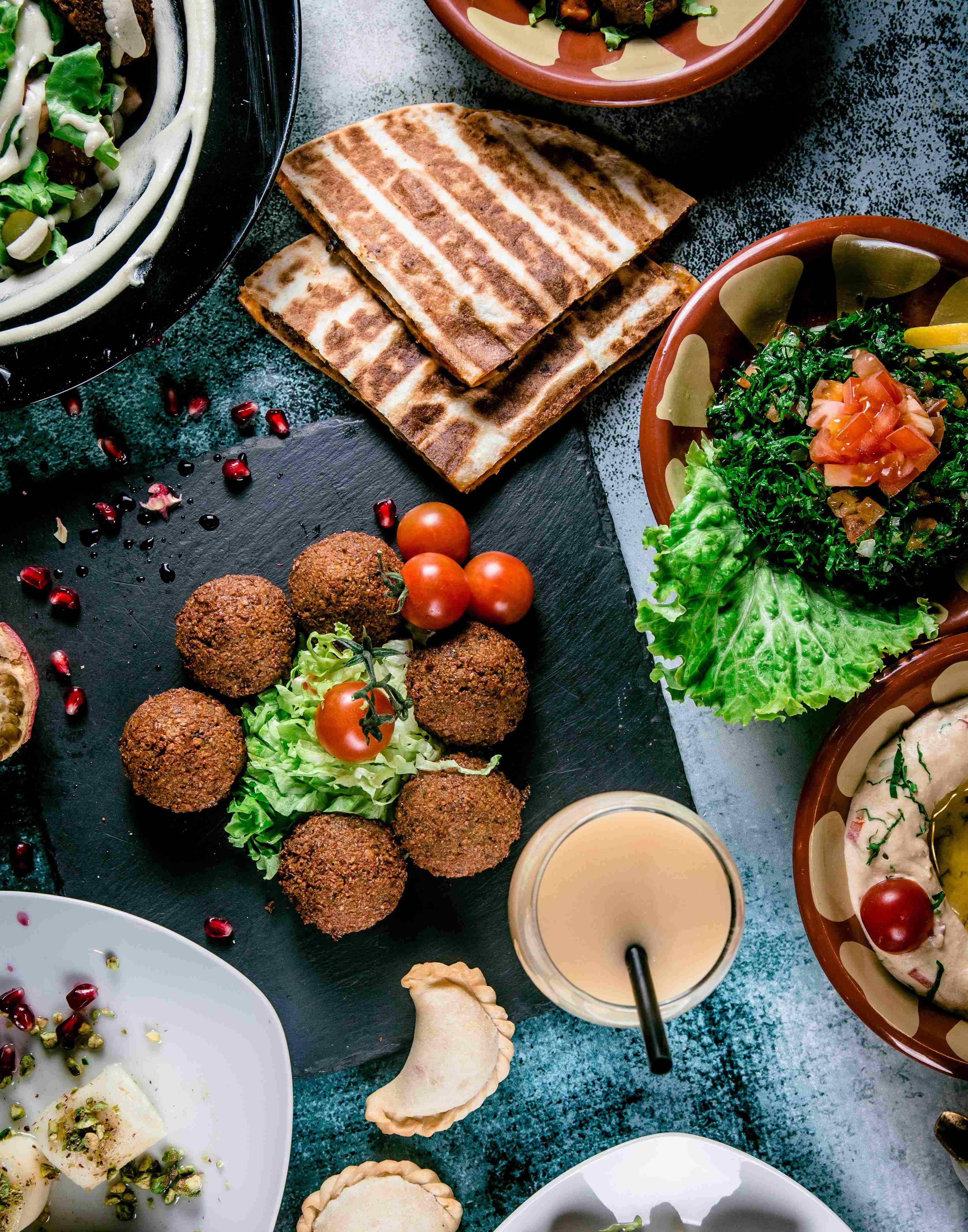 © Layali Lebanese Restaurant
© Layali Lebanese Restaurant
Zafer: I travelled a lot and, honestly, most places are the same; you can find good people everywhere. But, I love it here. The people, the neighbours. The pace of life is more stable here than in Dubai. I am at an age now where you cannot handle everything moving so fast. This is now the best place for me to be.
Bernard: At first, people couldn't understand why we don't serve alcohol here. Tkalčićeva is so famous for drinking. But, after we explained that it is a religious thing, that this is our Hallowed way of working, people accepted it. We offer instead our Arabic teas and coffee.
Zafer: I was in business all my life. This is the first time I worked with food. Before this, it was only a passion in my home. Preparing food is like the sea; so many spices, so many different combinations. The food we make at Layali is the food I love to make at home. I would describe our food as Arabic, but really now, some of it is international. They ask for it everywhere. And not just falafel and hummus. I get shocked when people ask for muhamara or fatoush. I guess food and people travel a lot more these days.
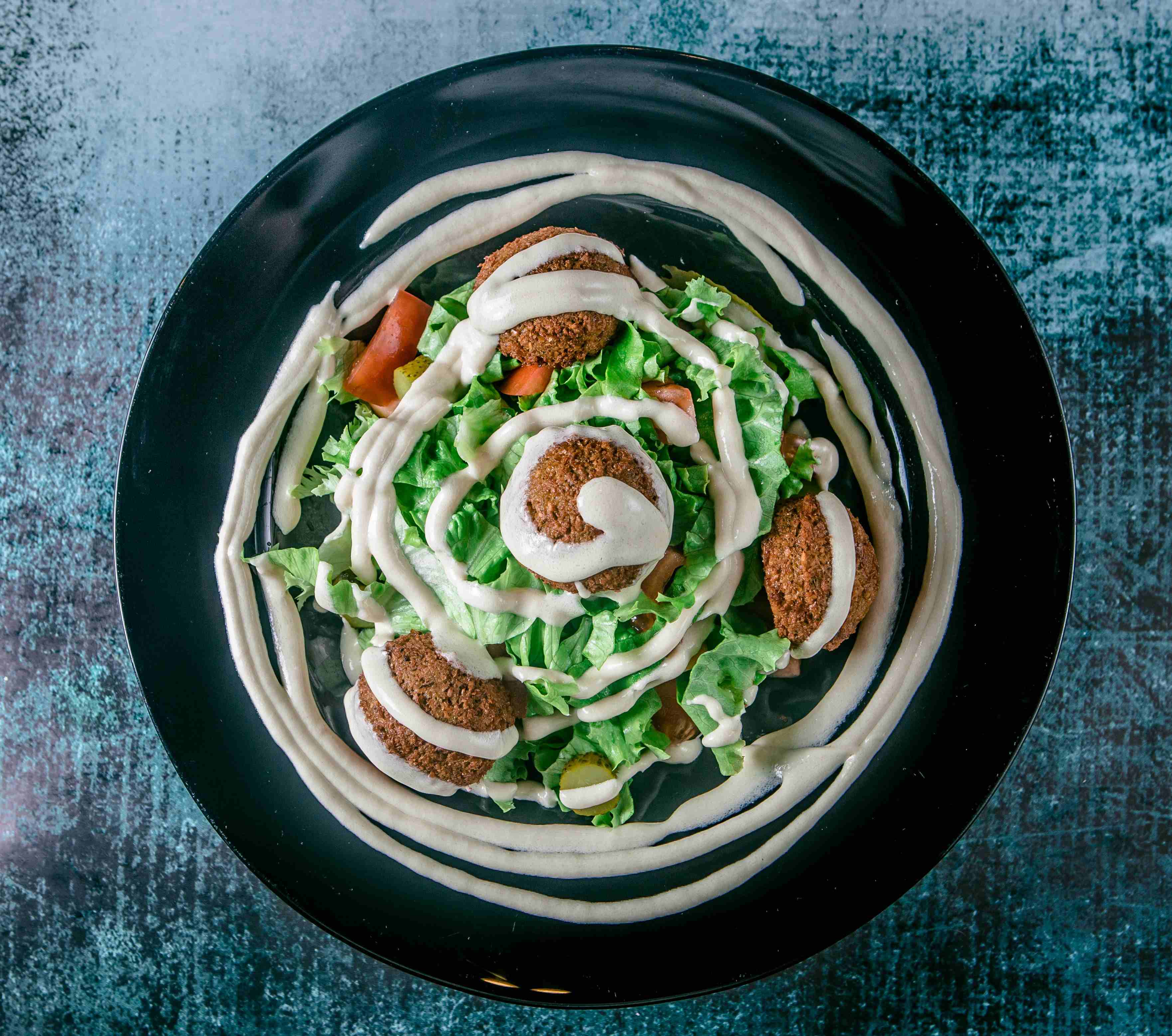 © Layali Lebanese Restaurant
© Layali Lebanese Restaurant
Bernard: It can be tricky to eat out here if you are a Muslim, because so much of the meat here is mixed and it may contain some pork. It's even more difficult if you strictly adhere to religious rules which dictate you can only eat Halal meat. We have a Halal supplier for all of our meat here. There are farms in Croatia and the wider region which provide meats in this way.
Zafer: All of our spices are imported. We tried everything that is on offer here, but nothing is quite the same as back home. All the spices we use are really fresh. We import them from Lebanon or Dubai. We use the fresh parsley from here. In every Arabic home, you'll find a mix of seven spices. It's very important to our cuisine and it can differ from house to house, from region to region. We have different spice mixes for each meat dish we make. We tone down the spices to more suit European tastes but, if someone asks, we make it how we make it back home.
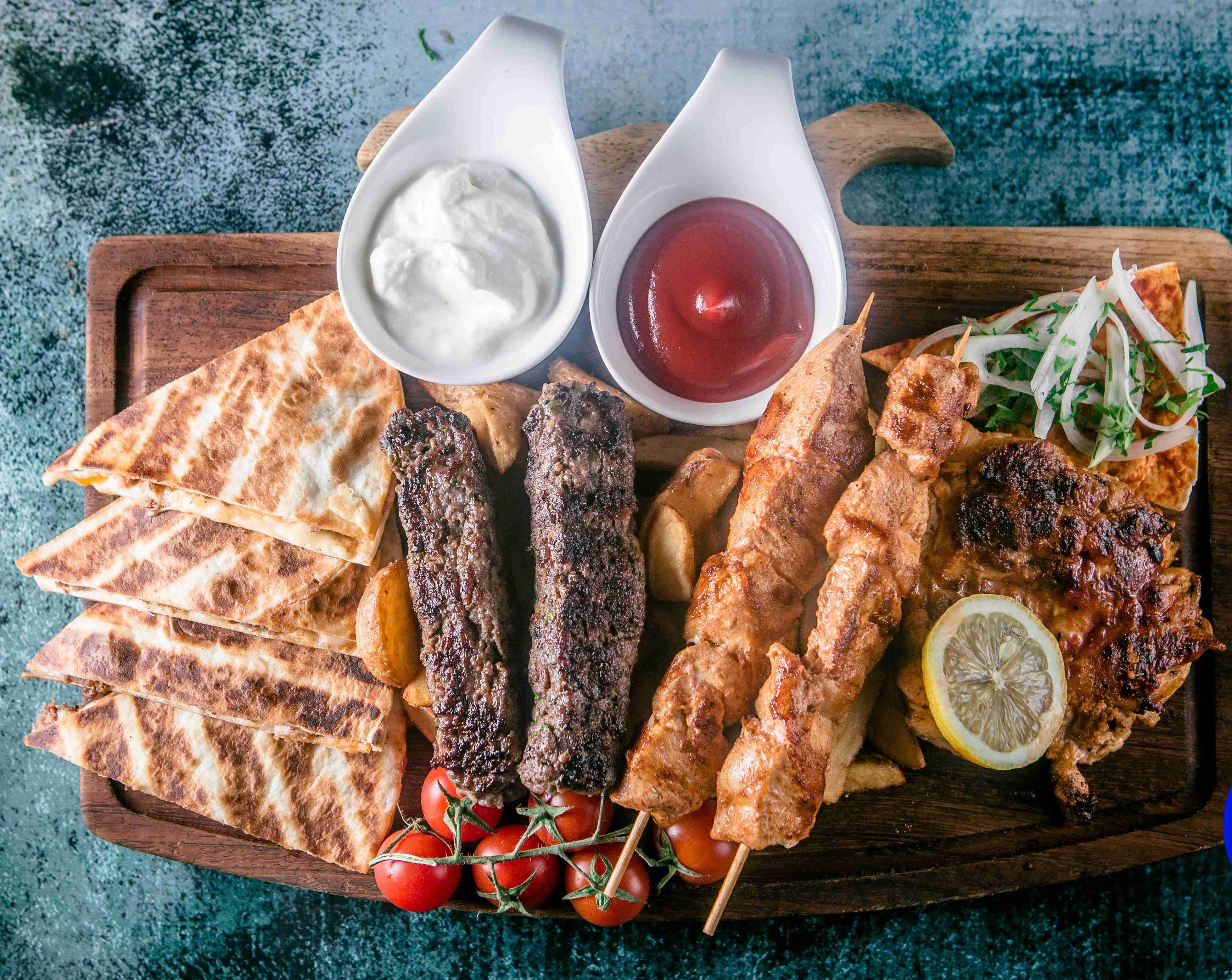 © Layali Lebanese Restaurant
© Layali Lebanese Restaurant
Bernard: In my home, we mostly eat meat. We don't actually eat so many vegetarian main courses. But, when I eat the vegetarian options from Layali, such as falafel, I really don't miss the meat. It really encourages you to eat less meat. I feel lighter - especially when I'm working - if I eat like this. It's perfect for a lunch in this hot, summer weather.
Zafer: If I'm not working, I love to walk. I love the city and I love the weather. I walked all over Zagreb. I don't have a map, I just walk. I love the old buildings and the nature. In Dubai, all the buildings are new. It looks artificial to me. When I'm tired, I stop in some cafe for a drink. Especially I love the rain. When it rains, I walk. If I eat somewhere else, I usually take pizza. It's something we don't make here.
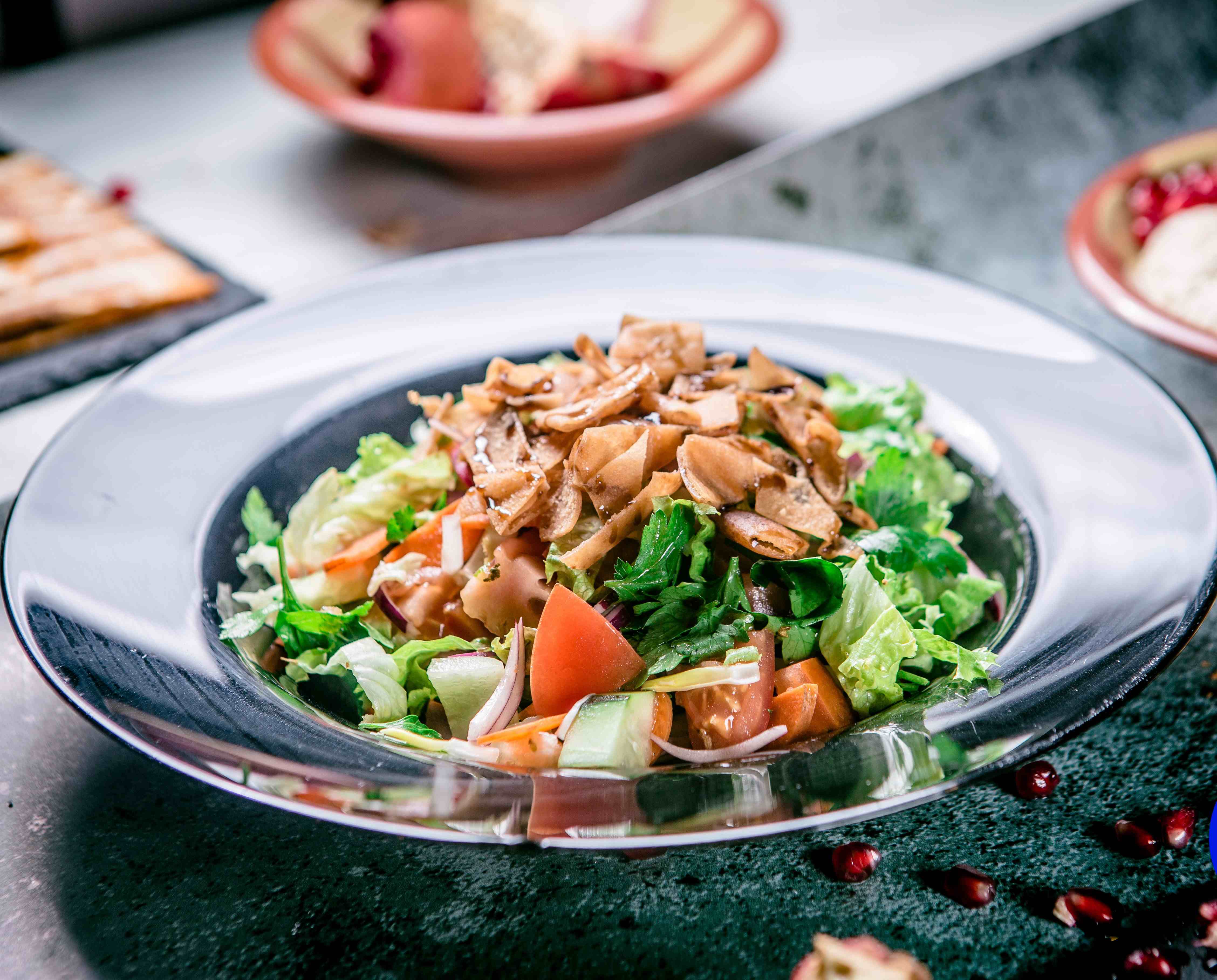 © Layali Lebanese Restaurant
© Layali Lebanese Restaurant
You can find Layali Lebanese Restaurant at Tkalčićeva 59
You can read the introduction to our series on Zagreb international cuisine and the first installment here
To follow our whole series on international cuisine and to follow the Croatian restaurant and gastro scene, keep an eye on our Gourmet pages here
International Cuisine in Zagreb: Falafel etc.
July 24, - Zagreb's food offer has grown considerably in quality and choice over the last decade, with Michelin stars galore and an exciting range of international cuisine options. We continue our look at some of the best new outlets offering meals never previously available in the Croatian capital, getting the story behind these businesses and their food. In this installment, we look at the fresh take on vegan-friendly falafel offered by Falafel etc.
If you're hungry or thirsty, you're not short of options on Kaptol, the city centre section of Zagreb's upper town. But, judging from the queues snaking down Opatovina, leading to the door of Falafel etc, something was clearly missing. Open for less than a year, the informal restaurant and takeaway has established itself as provider of the city's finest falafel, just as popular with health-conscious meat eaters as it is with their loyal vegan and vegetarian following. Deep-fried balls made from minced chickpeas, spices and herbs, this middle-eastern snack has long been one of the best lunchtime options available in neighbouring Belgrade. With the arrival of Falafel etc, Zagreb finally has an outlet easily as good as the best of what's on offer in the capital city next door. Antonija Kraljičković (right) and staff outside Falafel etc. © Total Croatia News
Antonija Kraljičković (right) and staff outside Falafel etc. © Total Croatia News
My name is Antonija Kraljičković and I'm from Lekenik, a small village near Sisak, roughly 30 kilometres from Zagreb. For the last 15 years I've been living in Zagreb. I went to university here and completed a degree in journalism. Towards the end of my studies, I started to have the feeling that journalism wasn't for me and my hobby was cooking. When I was younger, I'd always wanted to have some little restaurant, but back then it just seemed like a daydream. But, I was working in one job and I wasn't satisfied and I decided I really wanted to do something with cooking. So, now I'm here. We've been open for less than a year.
I wasn't so much inspired to learn cooking by a family member. I had to learn more out of necessity. I started living on my own when I was 18. It was only then that I realised that I love to cook. Once I'd made up my mind that I wanted to work doing cooking, I had to think of something to do. I've always loved falafel and I couldn't find anywhere in Zagreb that I thought made it as good as I'd tried elsewhere. Zagreb is full of pizzeria, burgers, grill places, so I thought that falafel would be a good idea. I think I made a good choice.
Sometimes falafel can be quite dry and quite hard in texture. I wanted to make authentic falafel, in its original flavour, but I didn't want to make it like that. I wanted it to be more appetizing. For almost a year I was doing taste testing and experimenting in my kitchen, trying different ingredients and additions, trying to get a consistency and texture that I was happy with. I narrowed it down to the top ten options, then I chose the best three – an original falafel, flavoured with coriander, one with beetroot and one with sweet potato. The next one I hope to introduce is a falafel filled with vegan cheese.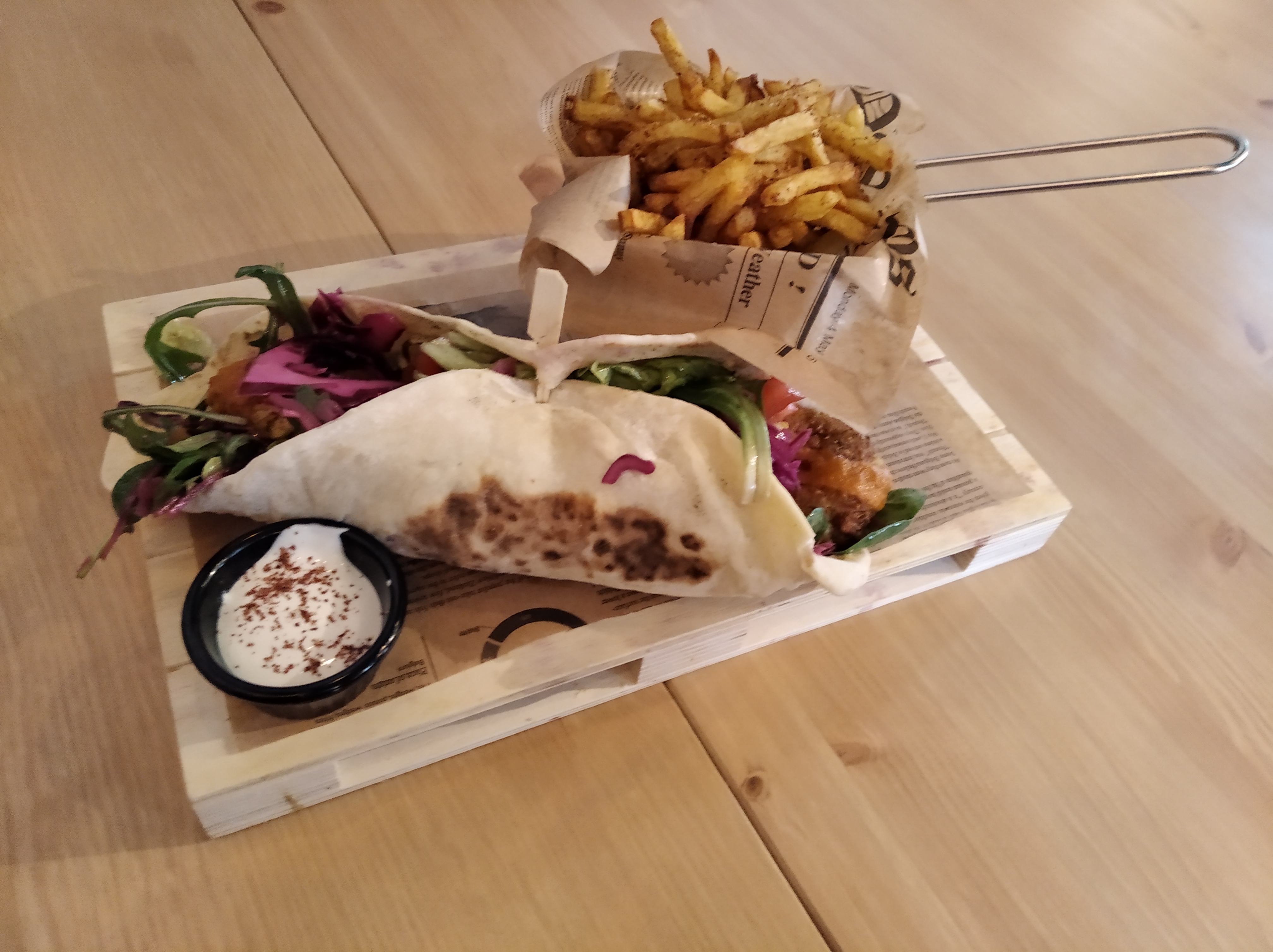 Falafel etc. © Total Croatia News
Falafel etc. © Total Croatia News
It's not been difficult to convince people to try our falafel, even though it's not been easily available before in Zagreb. We see the same people coming back here all the time, so I guess they like what we do. We have an area for sitting down and eating in the restaurant, but many more people come at lunchtime for takeaway and we use the delivery services too. Judging by their enthusiasm, I think people in Zagreb really like falafel and maybe they were waiting for a place like this to open. It's a healthy meal option and you really don't miss having any meat in this dish.
I think if I'd have opened this business ten years ago, maybe it would have been a lot more difficult to succeed. But, in recent years, Zagreb has welcomed more and more international visitors, tourists. Except for this year, of course! I think Zagreb's food offer has got bigger in order to satisfy such visitors. Maybe these visitors have also helped to change our perspective? I still think that we're missing out on some options. Some of the new places which open here, the prices can be quite high. These are restaurants you might go to once a week or for a special occasion, something fancy. Some people get their lunch from Falafel etc. every single day.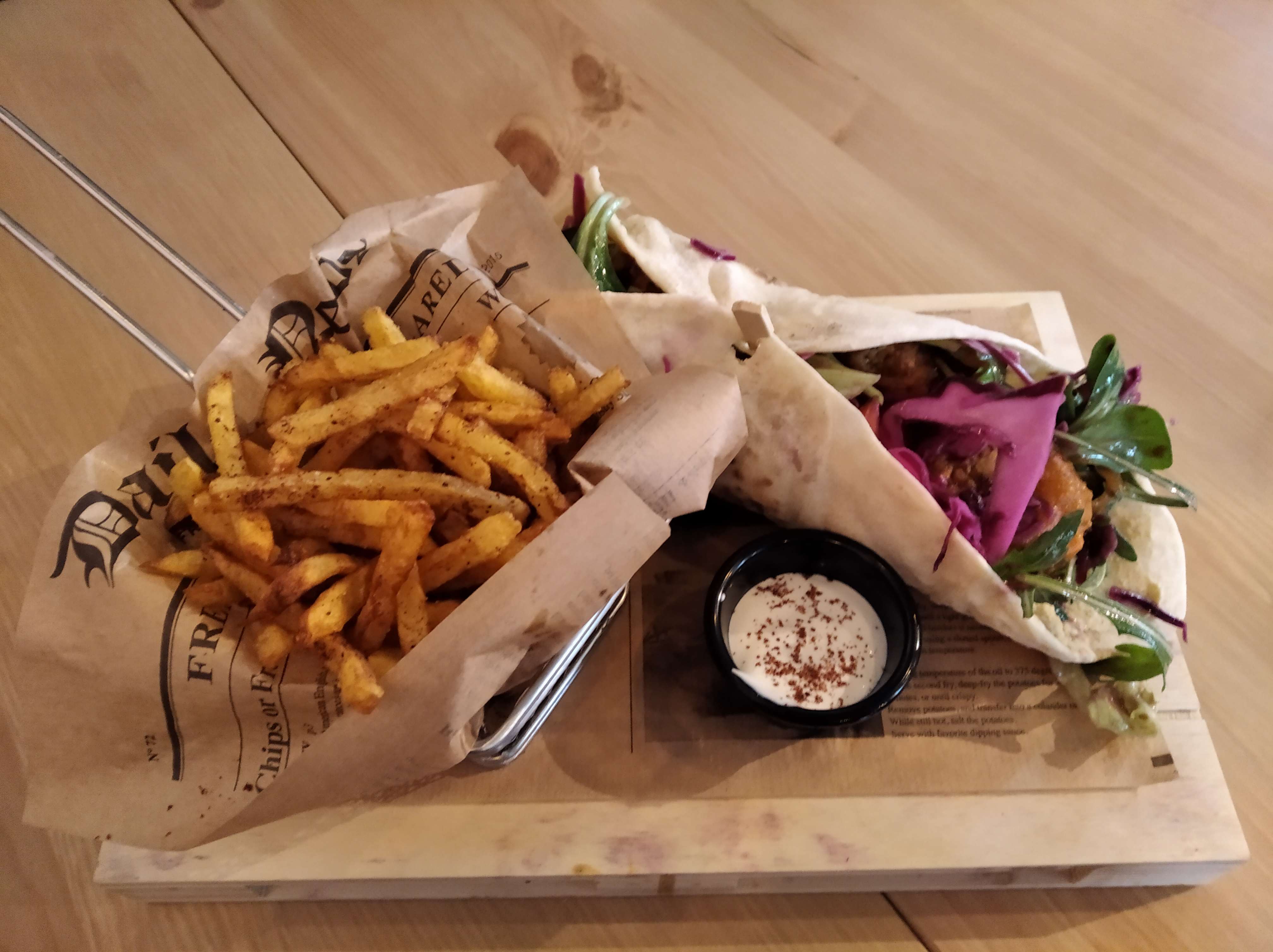 Falafel etc. © Total Croatia News
Falafel etc. © Total Croatia News
I get almost all of our ingredients and vegetables from local OPGs. I place an order with them and they bring it to Dolac with them in the morning and I collect it from there. It's just a couple of minutes walk from the restaurant. Every dish we make is vegan. I'm not vegan myself, although I do love vegetarian and vegan food. With falafel, it really wasn't difficult to offer a fully vegan menu instead of just a vegetarian choice. We buy dried chickpeas and soak them overnight in order to make the falafel and hummus the next day. We make all of our sauces and dressings ourselves. We also make our own bread. I hadn't planned to, but I tried every tortilla and flatbread available from the shops, bakeries and wholesalers and I wasn't satisfied at all. I didn't like the taste or the texture. So, I decided we had to do it by ourselves. For me, the bread is such an integral part of our falafel sandwiches. I had to get it right. For me, this dish is only truly complete when the bread is perfect.
I had been thinking about expanding the menu, with soups and something like vegan burritos. But, it has been a difficult period for such a young business, with Coronavirus. Luckily, the deliveries kept us in business and, even more lucky, we'd managed to get a really loyal customer base in just our first few months, people who wanted to order lunch from us several times a week. Thank you! That meant I was able to pay my costs and my staff. Now that the restrictions have been relaxed, they are ordering less, but they are instead coming themselves for takeaway. In the back of my mind, I wanted to maybe set up an outlet of the business somewhere on the coast, maybe on one island. But, many of these plans will have to wait for now. Maybe in a year or two. I first need to survive in Zagreb before I can think of opening on the coast.
NEW ADDRESS: Falafel etc. is now located at Andrije Žaje 60 10000 Zagreb.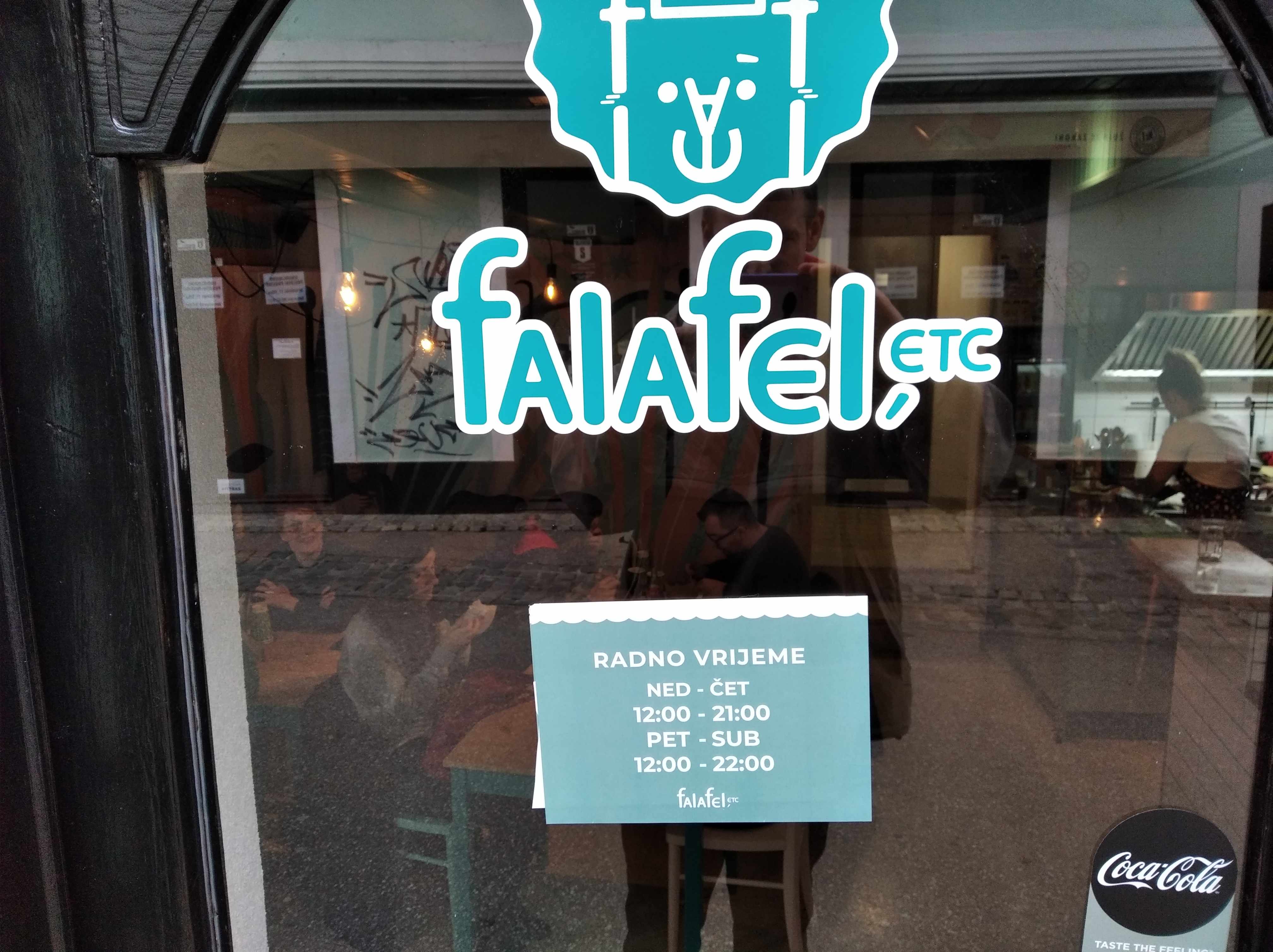
Falafel etc. © Total Croatia News
You can read the introduction to our series on Zagreb international cuisine and the first installment here
To follow our whole series on international cuisine and to follow the Croatian restaurant and gastro scene, keep an eye on our Gourmet pages here
International Cuisine in Zagreb: Curry Bowl
August 3, 2020 - Continuing our series on Zagreb’s international food offer and the stories behind these cuisines and businesses. This time, the unique Sri Lankan cuisine offered by Curry Bowl
Spicy eats are best friends with beer, so it's no surprise to find several of the city's international food outlets on Zagreb's popular promenade of pivo, Tkalčićeva. Greek, Turkish and two of the city's Indian food outlets are located here, one of the latter being Curry Bowl. Owned by brothers Clement and Brian Senaratne, who also run the city centre's The Whole Wide World hostel, their small outdoor terrace is the perfect (and only) place to familiarise yourself with the food of the brother's native Sri Lanka. Situated over 1400 kilometres off the coast India, Sri Lankan cuisine is wholly different from anything you'd find on the mainland. Curry Bowl's salads, soups and curries are the perfect introductions to the island's distinct dishes, although for first-time visitors we strongly recommend trying the satisfying kotthu - a dish of chopped vegetables and egg, flavoured with garlic, ginger, lemongrass, curry leaves, spices and with a selection of meats and/or cheese as additional extras
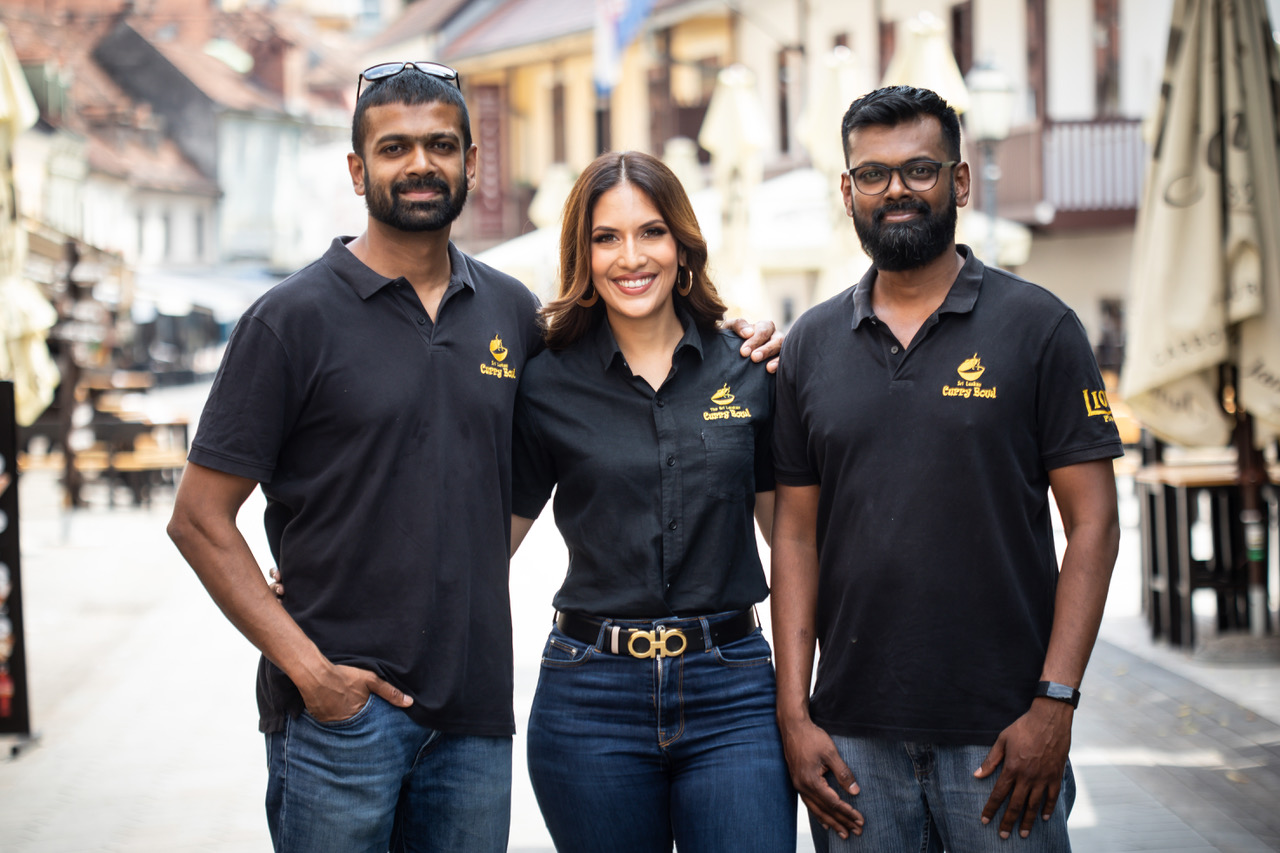 Clement, Tamara and Brian Senaratne © Curry Bowl
Clement, Tamara and Brian Senaratne © Curry Bowl
Brian Senaratne: I came here in 2014 and my brother came to visit me in 2015. We did a trip around Europe together as he was due to marry the next year. We got to Amsterdam and my brother realised how much Zagreb had impressed him, so we came back. That's when the idea of our business was born. We'd been planning a change in our careers, to lose the suit and tie. I spent 13 years working for Microsoft and Clement worked in sales, first in telecommunications, then in insurance.
Clement Senaratne: My visit to Europe was in August, I went back home to get married in October, we came back to Zagreb in November and we opened the business in December.
Brian Senaratne: What we have created here is curry dishes that are comfortable for Europeans. We haven't played around with the flavours, it's still very authentic, but not everything is super hot and spicy. We offer different levels of spice, so you can choose. Moreover, the way the meals are presented is very different. In most parts of Asia, the food is presented to everyone in the middle of the table. We all eat the same and we eat with our hands. Here in Europe, everyone orders what they want to eat individually. And, of course they use a knife and fork. Actually, quite often people ask us if we use chopsticks to eat Sri Lankan food, ha! We don't.
The main difference between Sri Lankan food and food from the rest of India is that we use a lot of coconut. On the mainland, they use a lot of ghee, milk, curds and yoghurt. Dairy products. India is a big place, they have 62 different dialects and the food is just as varied. Our food is more like that from the south of Indian, similar spices, but we are an island. Therefore, the influence of other countries on our cuisine has been minimal. Sri Lankan cuisine has been preserved and is today much the same as it has been for hundreds of years.
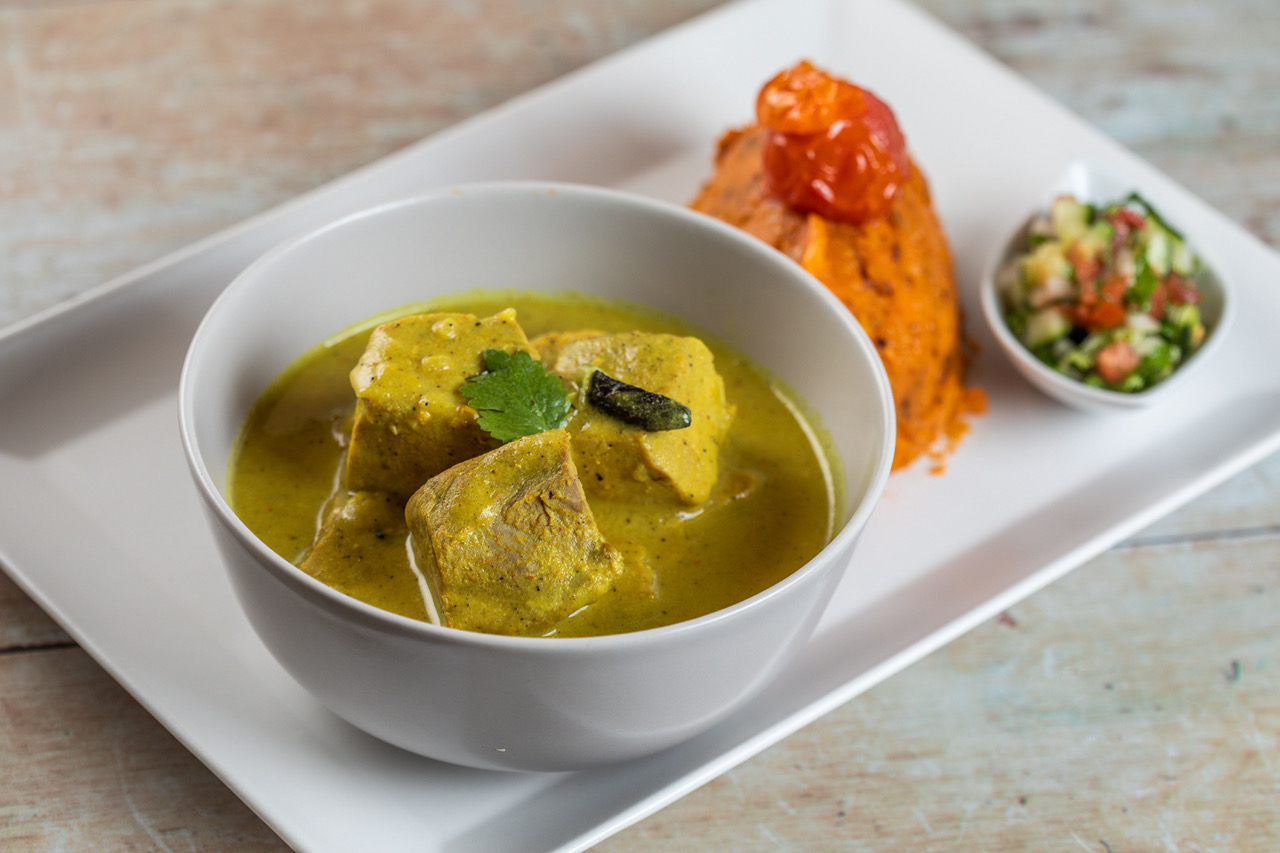
© Curry Bowl
The spicing we use most frequently here is Sri Lankan curry powder. Every region has its own curry powder, its own unique blend of spices. The typical Sri Lankan curry powder has five to seven ingredients. We import two types of curry powder direct from organic producers in Sri Lanka, one for vegetarian dishes, the other for meat dishes. Almost every other ingredient we use here is produced in Croatia. We only import a few very specialised products, such as Sri Lankan Lion beer and King Coconut Water, which is Sri Lanka's favourite refreshment drink. The most popular dish on our menu is Kotthu, which is Sri Lanka's most famous street food. It's a mixture of roti, curry sauce, egg, vegetables and whichever meat you choose.
Clement Senaratne: After the restaurant was up and running, in 2016 we opened Curry Bowl on Obonjan island. It's open every summer except this summer. In 2017 we opened The Whole Wide World Hostel on Britanski trg in Zagreb. In 2018 we became distributors for Lion beer in Croatia. Our next step is to try and take the Curry Bowl brand outside of Croatia. 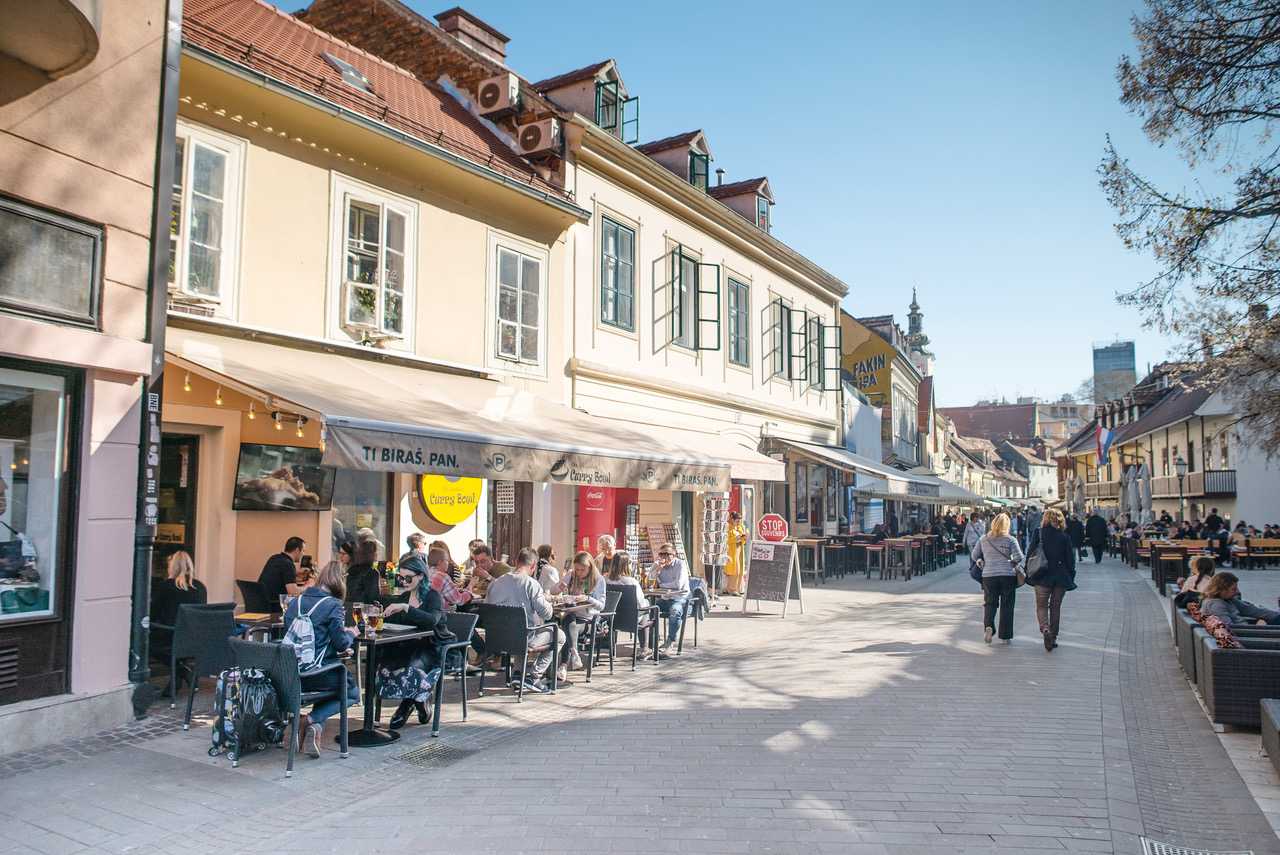
© Curry Bowl
Brian Senaratne: What is the main difference between social life in Sri Lanka compared to that in Zagreb? Clement, maybe your wife can give her perspective? She travels very regularly between Zagreb and Sri Lanka for modelling work as she is a former Miss Sri Lanka.
Tamara Senaratne: I love it here. The culture is just so different. I love the scenery too. For women in Sri Lanka, it doesn't always feel safe to walk on the streets. Here I feel completely safe, I feel a lot more free. The upbringing is just so different. In Sri Lanka, boys and girls are separated in education from a really young age.
Brian Senaratne: The British system! That comes from you guys, ha!
Tamara Senaratne: Ha! The result is that when you leave school you're not that familiar with the opposite sex, you don't know how to act with one another. I think a lot of people there have difficulty with that. When I came here, I was amazed that I could walk around at 10pm or 11pm on my own and feel completely safe.
Brian Senaratne: The scenery here in Zagreb is particularly enjoyable, especially the centre. We don't really have one central city that has developed in such a way in Sri Lanka, because each time we got new rulers – the British, the Dutch, the Portuguese – they changed where the capital was. The people we have met here, both in business and socially, have been very polite and welcoming. One of the most recent topics of discussion globally has been Black Lives Matter. I can honestly say we have not seen or experienced anything like that, any racism, while we've been here. We're very happy here.
Curry Bowl is located at Tkalčićeva 44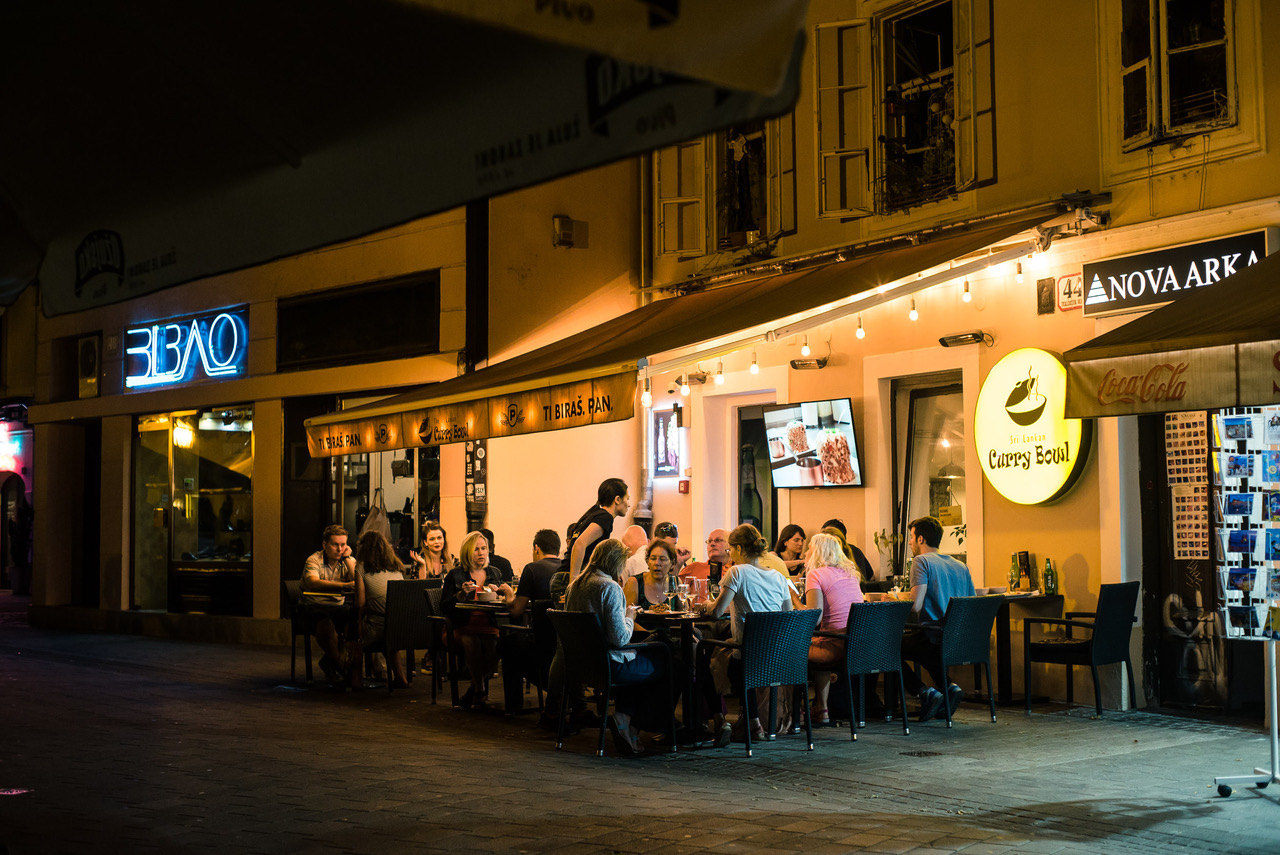
© Curry Bowl
You can read the introduction to our series on Zagreb international cuisine and the first installment here
To follow our whole series on international cuisine and to follow the Croatian restaurant and gastro scene, keep an eye on our Gourmet pages here
International Cuisine in Zagreb: Namaste
July 24, 2020 - Zagreb's food offer has grown considerably in quality and choice over the last decade, with Michelin stars galore and an exciting range of international cuisine options. We continue our look at some of the best new outlets offering meals never previously available in the Croatian capital, getting the story behind these businesses and their food. In this installment, we look at the authentic Indian cuisine and fine dining experience of Namaste
Attempts at offering international cuisine are not entirely new in Zagreb. But, quite a few who've tried have done little but that; try. Under-spiced, lazy and way off-mark, some approximations of exotic foreign dishes leave many an international visitor to Zagreb feeling underwhelmed. Situated across from Studenski Dom Stjepan Radić, a ten-minute tram ride from the city centre, Namaste is the total antithesis to such disappointments. Offering wholly authentic Indian cuisine and specialising in the menu of the subcontinent's south, Namaste is 100% the real deal.
An expansive set up with an exquisitely designed interior, this restaurant excels at offering a formal dining experience that will be a voyage of flavour discovery to the uninitiated. Prawn, fish, lamb and chicken curries are accompanied on the menu by freshly-prepared speciality breads, rice, salads, skewered kebabs and a myriad of paired sauces and chutneys, with a huge range of unmissable vegetarian options. To anyone passionate about food, a visit to Namaste is simply a must.
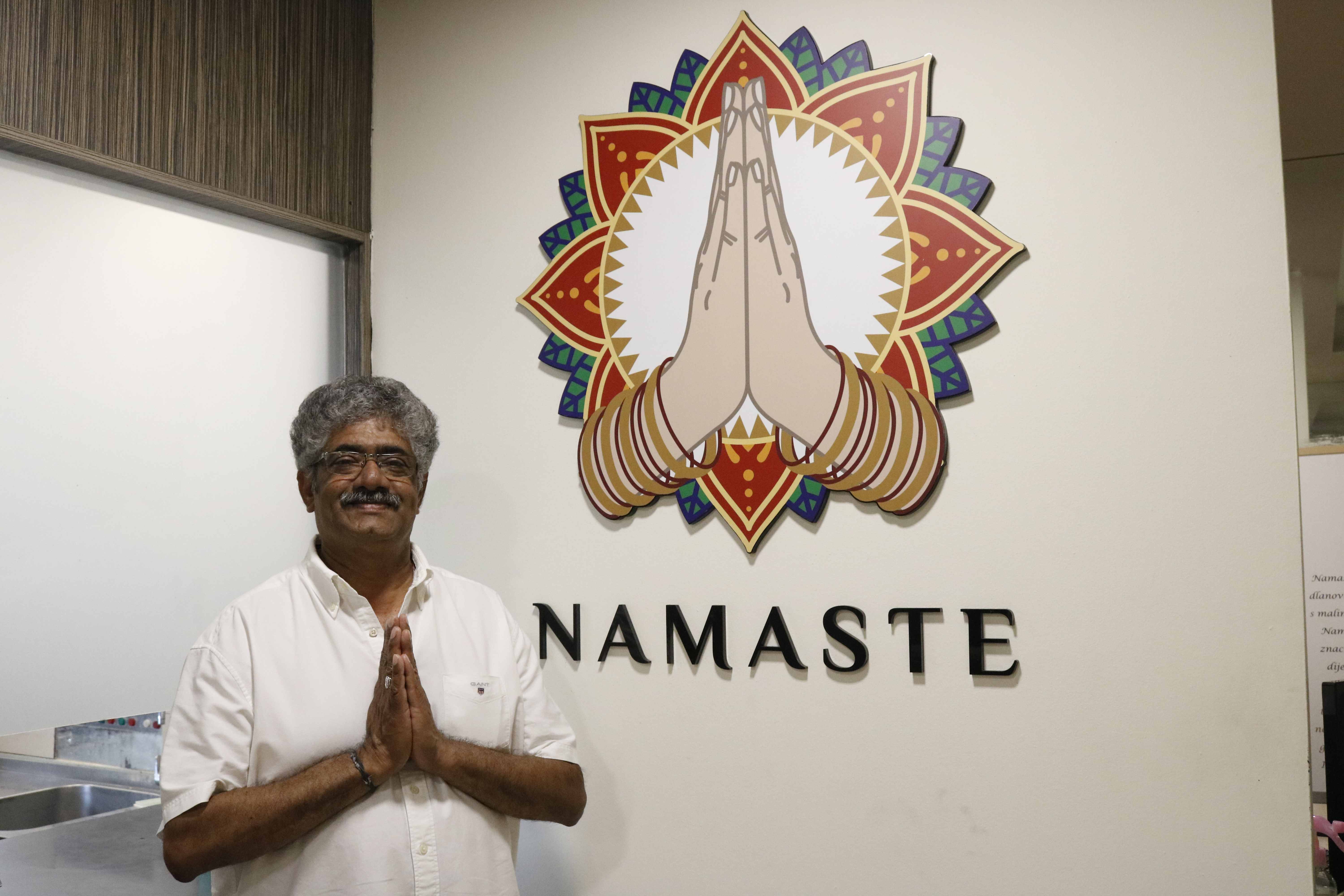 Dev Raj, proprietor of Namaste © Vedran Pažin
Dev Raj, proprietor of Namaste © Vedran Pažin
Interviewer: Hello Dev Raj! Raj means king, doesn't it?
Dev means God and, yes, Raj means king.
Interviewer: So, there's no mistaking you are the boss here!
Ha! I guess not. I was born and brought up in the south of India, in Bangalore, one of the biggest cities in the world. I first came to Croatia in 2004. I travel extensively. My main business is in granite and marble. It's the family business. We used to export a lot of it from India into Italy, especially Verona. I had an opportunity to go into the hospitality business in Croatia and that's the reason I first came. I subsequently set up in Croatia as the European base for the family business and we import our granite and marble through here to all regions of the Balkans and Europe.
The next business we moved into was the export of timber from here. We send timber from Croatia to India, Vietnam, UAE and China. Croatia has some of the best timber in the world. Certainly, the oak from here is among the best. If you go to a store like Oak Furniture Land in the UK, which has around 100 stores, probably 90% of the oak furniture they have comes from Croatia, although few people know that, because it first goes to Vietnam or China before being sent to the UK. Croatia also has excellent beech. We process the wood here, ship it to be made into furniture and then it is exported to places like the UK. It's a massive industry. On any given day, such exports from China, Vietnam, Malaysia and Cambodia total not less than $500 – 600 million.
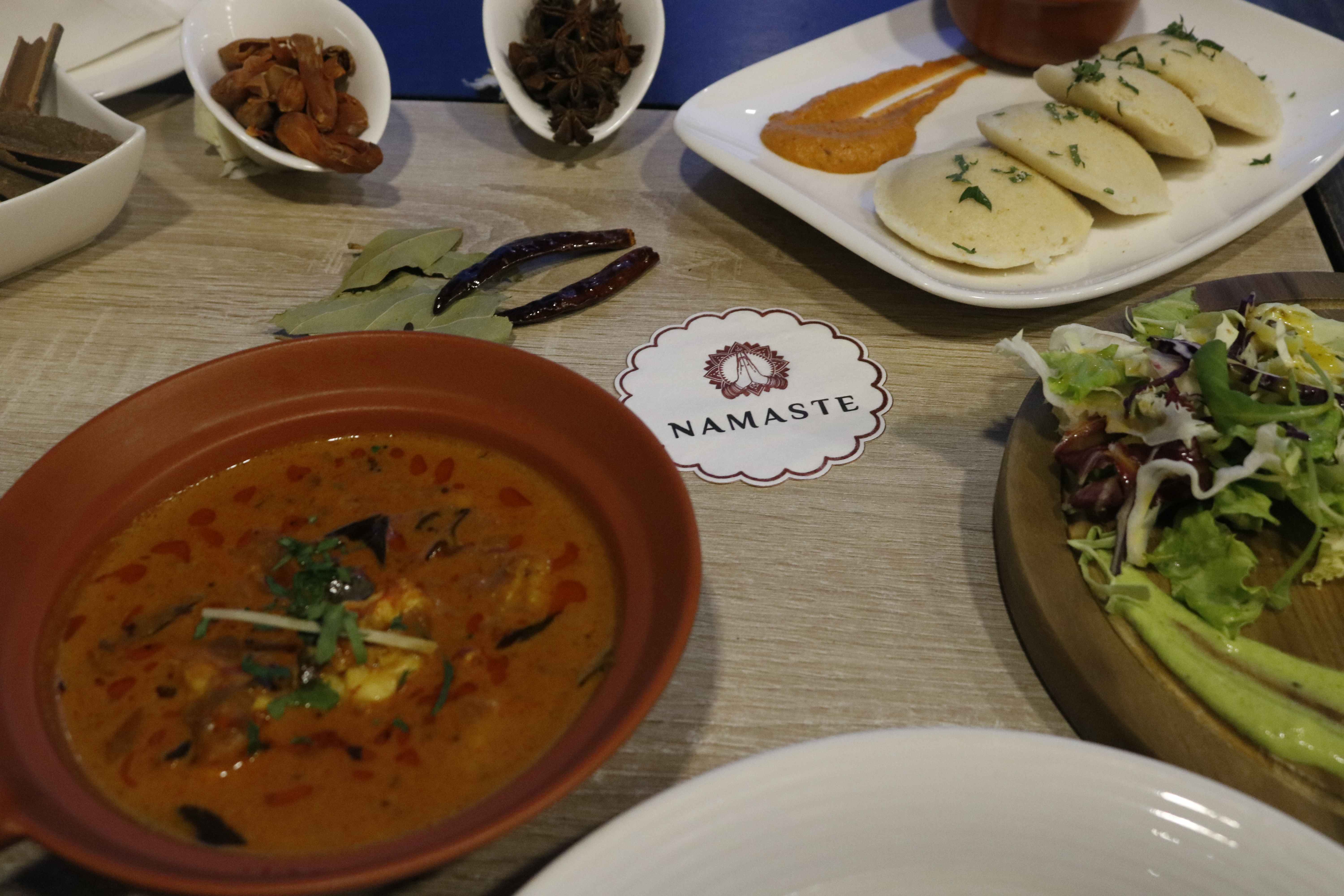 Namaste © Vedran Pažin
Namaste © Vedran Pažin
We started the Namaste restaurant just over two years ago. It is my passion. I always wanted to have a restaurant here and I wanted to do it right. Croatia has been good to me and I wanted to be able to give something back, something really authentic. All of our spices, rice and even the wheat flour we use comes from India, every 15 days, via London. All of the vegetables, meat and herbs we use are produced here in Croatia.
Food is different all over India. When you go to the south, where we are from, you see people eating more rice and things made from rice flour, such as dosa, which are like pancakes or igli, which is like a dumpling. Biryani is from there. Every state in the south of India has its own distinct flavours. Our food is very rich in spices and therefore very rich in flavour and in medicinal value. Alternatively, in the north of India, everything is based around the oven, like a Tandor clay oven. More bread, more wheat and spices which make the dishes hotter, because it's colder up there. We feature some cuisine from the north in our menu here.
We have a total of nine chefs in the restaurant. All of them are Indian and three of them used to work in London, so they are used to cooking for the European palette. All of them have experience working in 5-star hotels. Most of my waiting staff are also from India, the rest are from Croatia. Ours is one of the largest restaurants in south-east Europe and we set the bar extremely high. It is more like a fine dining restaurant. A lot of consideration went into the design and the furnishings and the staff always look spick and span. We selected the best of the best wine after pairing it with our food, which is normally not done. We made sure we got everything right. After a few months of being open, it worked and we could see some of the same faces coming back time and time again. We are full every Friday, Saturday and Sunday night. Before Corona, you would have needed a reservation to be able to eat here on one of those nights. The people who come have grown to love the flavours we do. Every time they come, they can count of the flavours being consistent and the meals just as delicious as the last time they ate here.
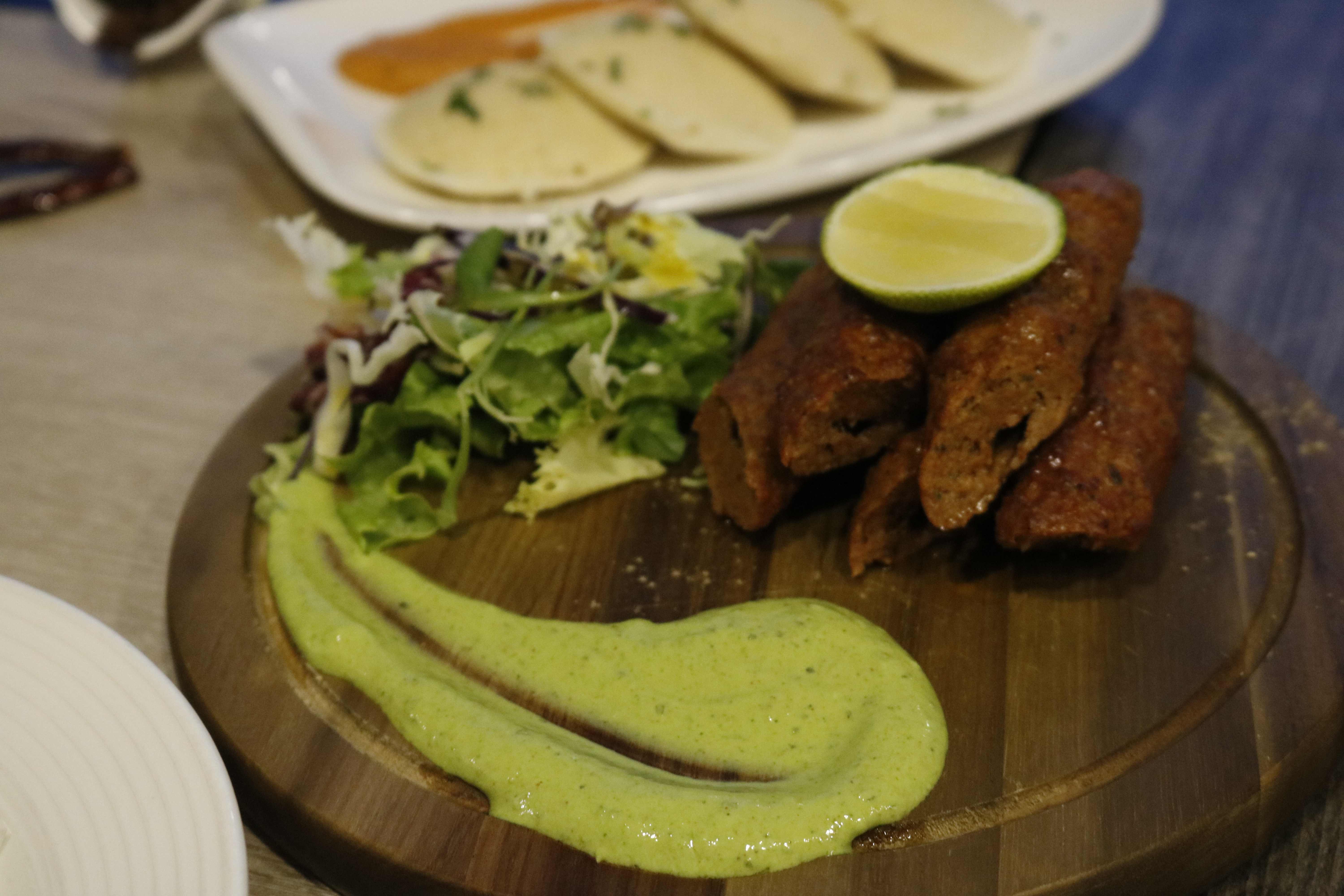
Namaste © Vedran Pažin
The most popular dishes here are the butter chicken, the chicken biryani and the dosa. They also love the lamb seekh, which I guess is a bit like the Indian ćevapi. My personal favourites? I love the daal, it's excellent. I also love the Chicken Chettinad curry, which is an authentic dish from the south of India, and the garlic naan. I also love the fish dishes. The chef responsible for the fish dishes is really one of the best guys in the world at making that style. He was famed for doing so in southern India before I persuaded him to come here. We only use fresh Croatian fish in such dishes and we use Orada and Brancin, the best we can get. Everything we make is first tasted and quality checked before being put onto the plate and presented to the diner.
What do I think of Croatia as a country in which to do business? It's a good question, a hard question. It's a very small country for me to have come to for our international family business. But, to its advantage, it is located very centrally in Europe. East and south-east Europe are incredibly accessible from here and there are two beautiful ports in Ploce and Rijeka. If I want to travel anywhere else in Europe, I can do so from any of the large number of airports they have here. So, for good connections and logistics, Croatia gets an A star. For nature too, also an A star - Croatia has the best beaches and coast plus incredible natural resources. These are the plus points. But, they still have some distance left to travel in regards to accommodating foreign business.
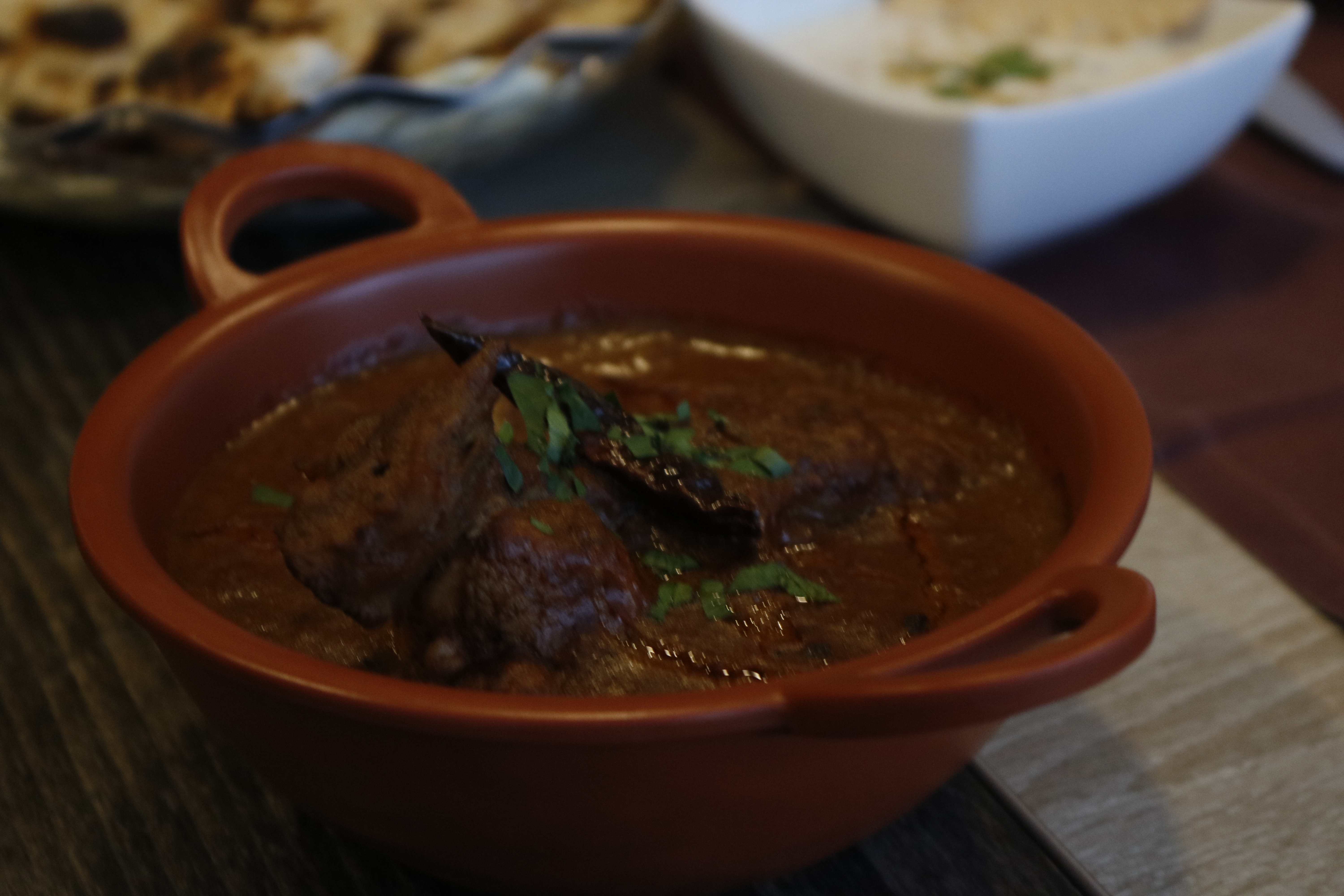
Namaste © Vedran Pažin
For instance, if you're a businessman or entrepreneur who wants to come and set up a business in Croatia, this first step of setting up a company is easy. Employing local staff is also very easy. But, if you want to bring in specialist staff from another country, it's a huge risk, because they will only guarantee their working visa for one year. If I want to invest $100, 000 to 1 million here, why can I not bring my specialist, experienced staff from another territory in order that it succeeds? It's a huge risk that their visa will not be extended. One good aspect is that you can approach anyone for help – the bureaucrat or even the minister – and tell them what you need. You can get that access. They will listen and understand, although sometimes the reaction can be very slow and there's always a huge amount of paperwork. They love their paperwork. They need to get rid of a lot of that. And they need to set up a standard window of opportunity for investors from any region, with a full package designed to assist you in setting up business here. If they did that, the GDP could double within 10 years. It's a slow progress that has been taking place since independence and the war. But, God has given them the best resources and the people are good, so I believe they will get there.
Namaste is located at Selska cesta 217
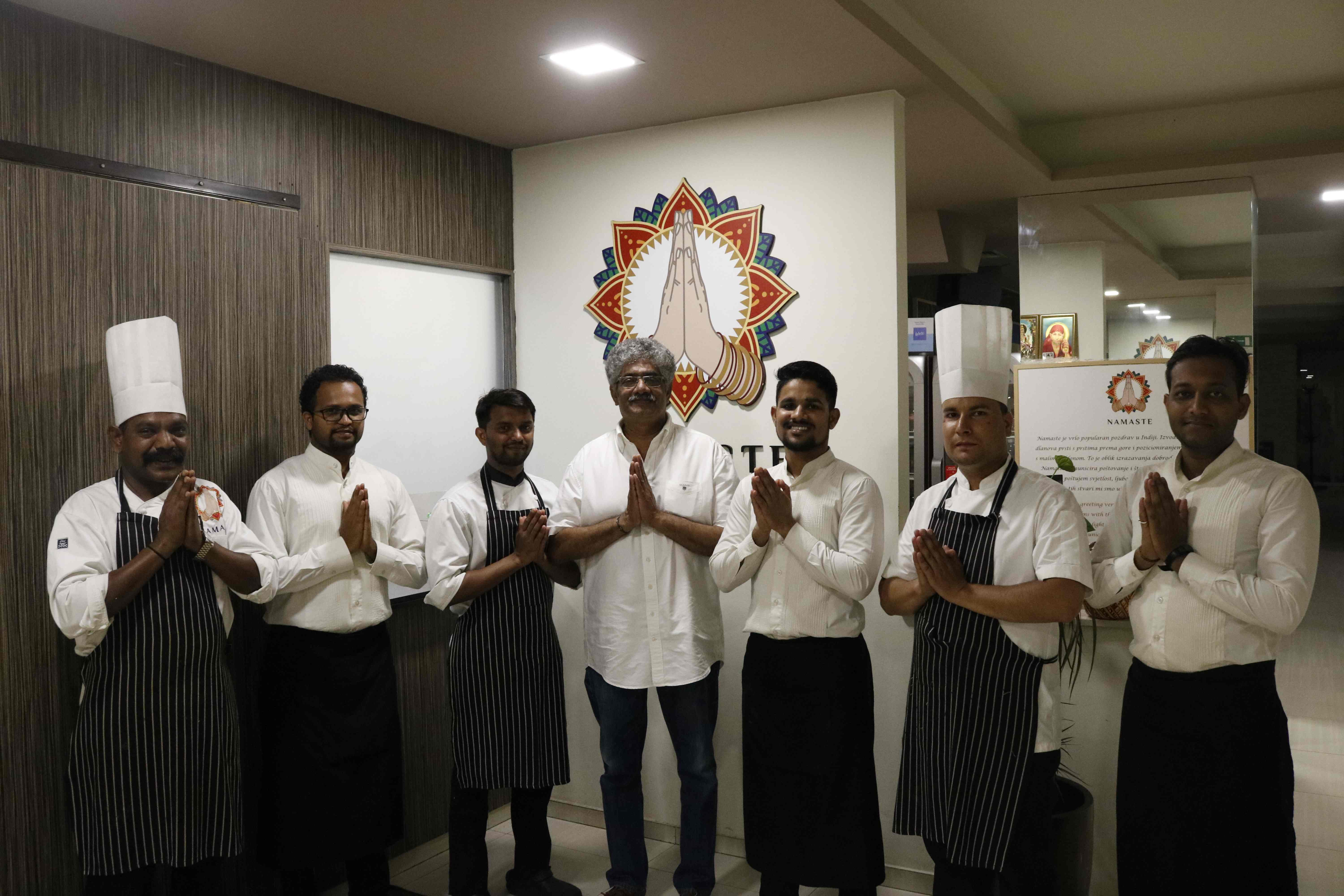
Namaste © Vedran Pažin
You can read the introduction to our series on Zagreb international cuisine and the first installment here
To follow our whole series on international cuisine and to follow the Croatian restaurant and gastro scene, keep an eye on our Gourmet pages here
An Expat Guide to International Zagreb Cuisine: Lazeez Lebanese Cafe
August 29, 2020 - Lazeez Lebanese cafe
Introduction
The construction work never ends. Ask any resident of Zagreb trying to sleep through summer with the window open, they'll tell you. When city streets fell silent during the height of the Corona lockdown, you could still hear the cranes, the steel, the engines, the profanity. Office blocks interrupt the horizon. Roads - wide like rivers in spring - appease the ever-increasing flow of traffic from the suburbs. And, yes, water erupts from all new fountains. Under the mayorship of Milan Bandić, the Croatian capital's appearance has changed considerably in the last 10 - 15 years.
But, beyond the reshaped streets and skyline, what kind of city will the mayor bequeath when he eventually leaves office? Over recent times, one heralded achievement has been that Zagreb has become a multi-ethnic, multicultural European capital. And, whether you're a fan of the mayor or not, you cannot deny that's true. The gangs of tourists guided around summertime streets are not the only exotic new additions here. In the last decade, Zagreb's population has evolved to embrace folks from all over the world. And nowhere is this more noticeable than in choice of food on offer.
Where once you'd have struggled to find much beyond pekara and pizza, burger and burek, ćevapi and the odd Chinese, Zagreb's food menu now boasts cuisine from all over the world. And, as new arrivals have broadened the palette of the city, just as many locals have been inspired to offer alternative eats. In this series, we'll take a look at some of the best that's now on offer and get the story behind these businesses and their food.
Lazeez Lebanese cafe
Located next the Tuškanova tram stop, just a few minutes walk from Kvaternikov trg or Džamija (Meštrović Pavilion / Home of Croatian Artists), Lazeez is an informal cafe and takeaway that specialises in the food of Lebanon, where owner Ihab Abisaid originally comes from. In warmer months, there are few greater rewards after a morning's shopping on the outdoor market, Tržnice Kvatrić, than relaxing on the covered terrace of Lazeez, snacking on a salad or the best hummus in the city. For dinner, they offer a range of platters and authentic kebab-like wraps, popular middle-eastern dips, falafel and hot, filled flatbreads called arays.
 Ihab Abisaid © Total Croatia News
Ihab Abisaid © Total Croatia News
I left Lebanon in 1993 and went to Moscow, where I finished Dental school. In 2011 I came here and opened the city's first Lebanese restaurant on Radnička. I worked there for two years and then went back to Moscow. But, I missed Zagreb. My whole family love Zagreb. It's so safe here and the weather is so much better. It's a great place to raise a family.
I came back in 2018 and ran a restaurant on Tkalčićeva with a partner, before moving here to set up Lazeez on my own. I go back to Lebanon twice every year to visit my extended family. Although I'm not Muslim, we don't use any pork meat here simply because it just isn't used in Lebanese food. In Lebanese cuisine there are lots of vegetarian dishes, especially salads and dips, and lots of barbecued dishes. Sesame oil, sesame paste, and tahini are key ingredients. We use them in dips like hummus, which is made from chickpeas, and muhamara, which is made with walnuts. We make falafel from chickpeas and our sandwich wraps are flavoured with Lebanese sauces, which are a completely different flavour to what you can find elsewhere in Croatia.
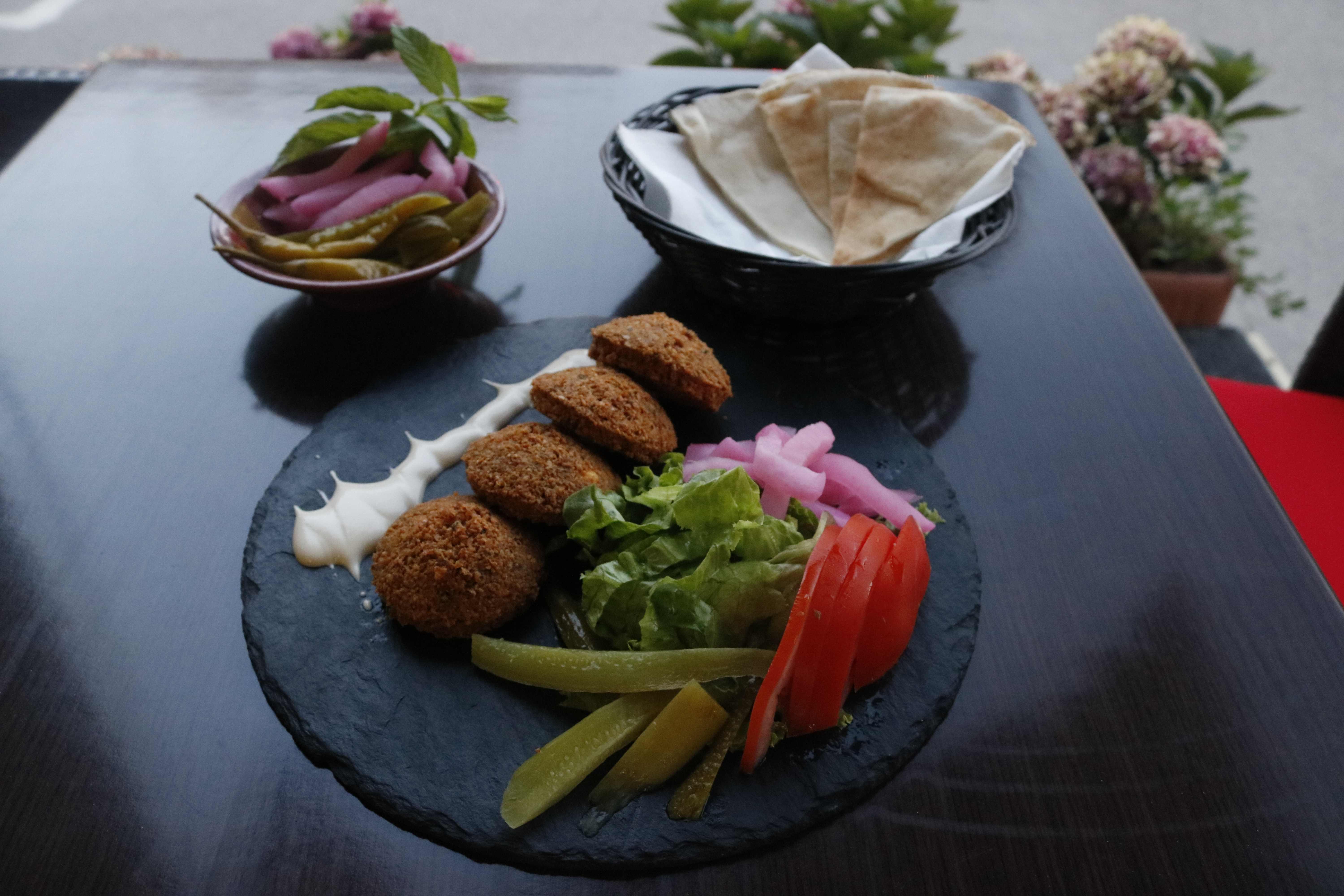
Falafel and side dishes at Lazeez © Veki Pazin
I think people enjoy the food here because it's natural and healthy, as well as being delicious. We use fresh herbs every day – parsley, mint and coriander. The spices we use are more exotic than you would find in local cuisine. Cumin features a lot and there is a classic Lebanese mix that contains seven spices in measured amounts. We use that often, especially in the meat dishes, and it's key to giving our food its Lebanese identity. Lebanese food is quite spicy, but it's not hot, like with too much chilli. The spices we use add flavour, not heat.
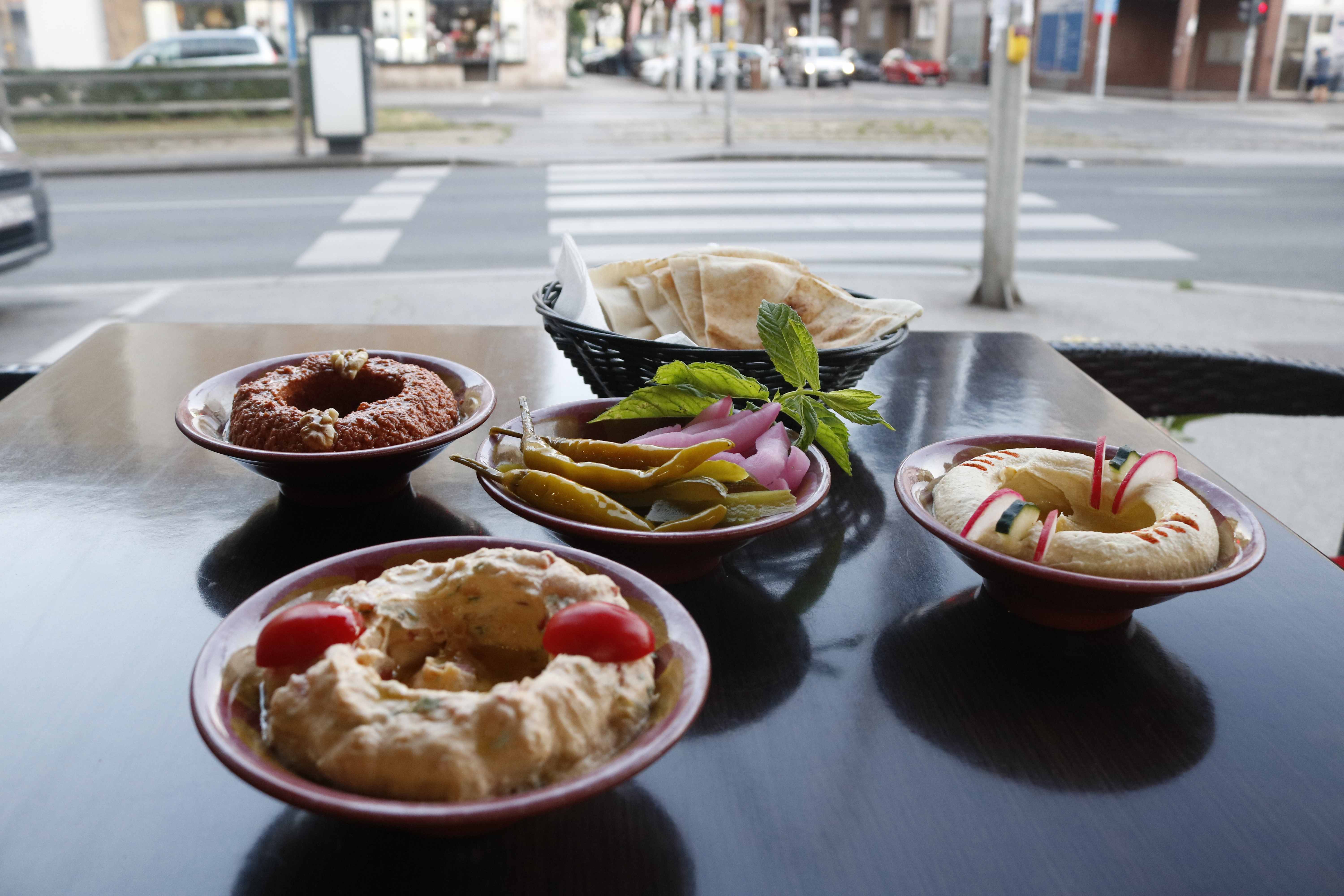
© Veki Pazin
I employ several members of staff here. Our full-time chef is from Syria and she is essential - Syrian food is quite similar to Lebanese. Before Corona we had one guy from Algeria working here, but the rest of the staff are Croatian. On our terrace every day you can meet people from many different countries and cultures, although most of our customers are Croatian. Zagreb has changed greatly since 2011. For me, what's most noticeable is the change in mentality. People are a lot more open now, accepting of outsiders and willing to try new things, like our food. I think people are more interested in eating healthy now, too.
You can find Lazeez Lebanese cafe at Zvonimirova 59


